Special Report
From Dec. 2019 to Dec. 2020: A Timeline of Coronavirus Spread
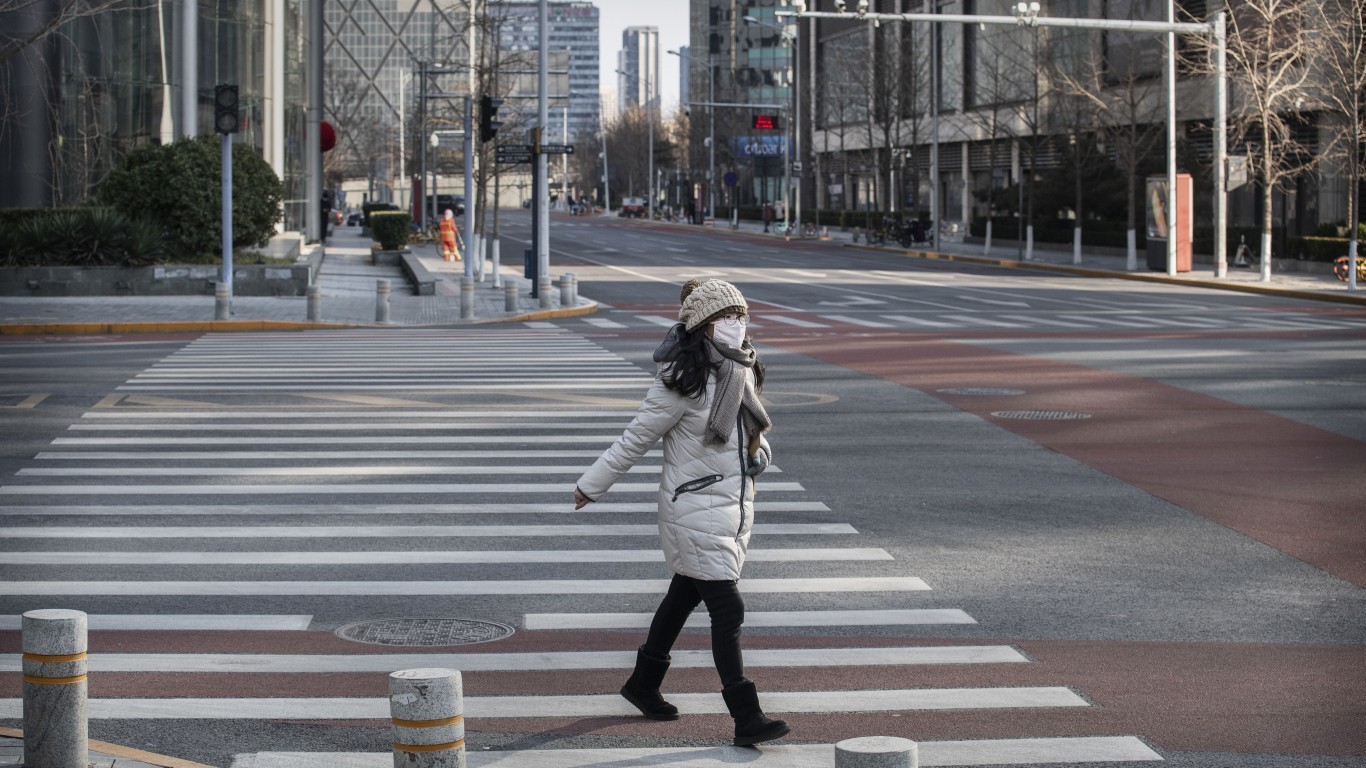
Published:

December 31 marks exactly a year since the World Health Organization first received reports of an unknown pneumonia-like illness spreading in Wuhan City, China. The virus, which would turn out to be SARS-CoV-2, the cause of COVID-19, had soon spread worldwide, leading to an extraordinary year of living in the shadow of a pandemic, significant economic struggles — and death. It’s also been a year of remarkable achievements, including the development and release of a COVID-19 vaccine.
As we prepare to enter the second year of the coronavirus pandemic, 24/7 Tempo reviewed news archives to create a timeline of more than 50 key milestones in the spread of the novel coronavirus and the disease it causes since it was first reported/discovered in December 2019.
The novel coronavirus, which is thought to have surfaced in a Chinese seafood and poultry market, has spread to at least 191 countries, killing more than 1.6 million people and infecting more than 73.7 million.
Going from noticing a mystery illness in the middle of New Year’s celebrations to having a never-before-seen coronavirus infiltrate the world took all but a month. The global public health emergency continued to unfold so rapidly, it has seemed uncontrollable. But public health measures, travel restrictions, and other steps taken have managed to at least slow some of the spread. And scientific efforts led to vaccines developed within nine months in an unprecedented achievement.
SARS-CoV-2 — the virus that causes COVID-19 — is a novel virus. And although scientists have been studying it for about a year, there are still no treatments and many unknowns — here are 20 major myths about COVID-19.
Click here for the timeline of the coronavirus pandemic
Methodology
To create a timeline of more than 50 key milestones in the spread of the coronavirus pandemic, 24/7 Tempo reviewed press releases and announcements issued by the World Health Organization, the Centers for Disease Control and Prevention, and the Food and Drug Administration. We also reviewed scientific studies’ summary published in medical journals, including the New England Journal of Medicine.

Dec. 8, 2019: Wuhan’s first case
A patient in Wuhan City, China reports symptoms similar to a coronavirus infection.
[in-text-ad]
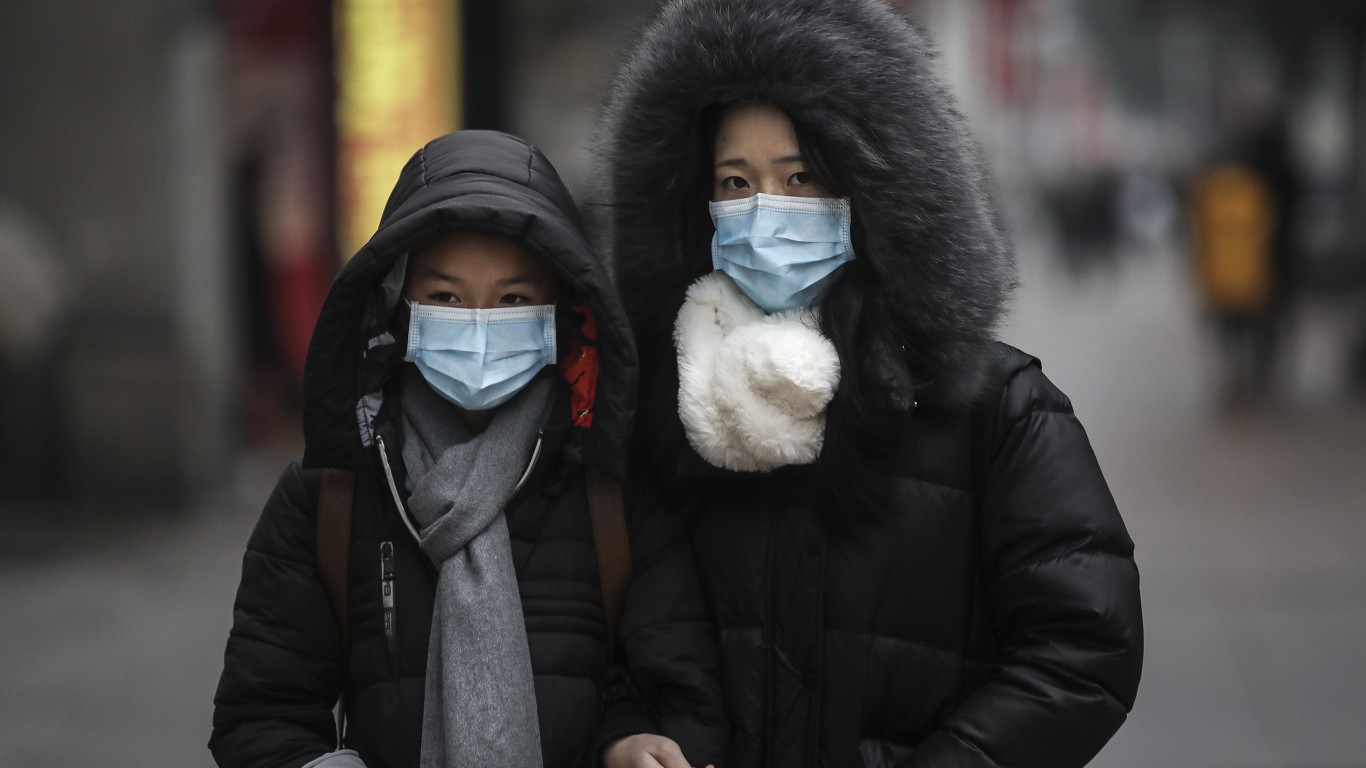
Dec. 31, 2019: WHO first hears of cases of ‘viral pneumonia of unknown cause’
The World Health Organization China Country Office is informed of a cluster of cases of pneumonia of “unknown cause” in Wuhan City, Hubei Province. In the next three days, a total of 44 cases are reported to the WHO.
Also on Dec. 31, 2019, the WHO picks up a Dec. 30 report transmitted by ProMed, an international epidemiological surveillance network, about unexplained pneumonia in Wuhan, China.

Jan 9: First death in China reported
A 61-year-old man is the first known patient who has died from the novel coronavirus. There is still no evidence that the novel coronavirus can spread among humans.
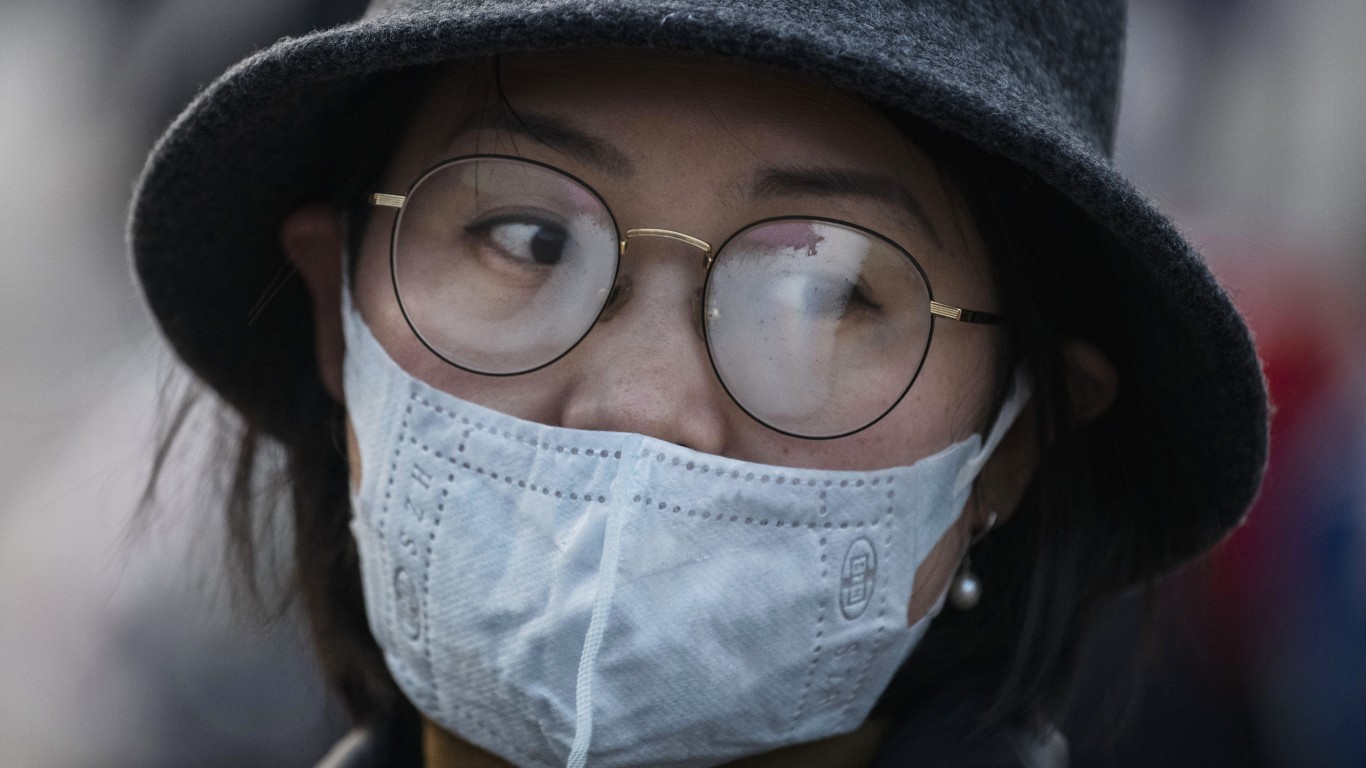
Jan 13: First coronavirus case outside of China confirmed
Thailand reports its first case of the novel coronavirus — and the first outside of China. The patient has recently returned from Wuhan, where the coronavirus was first detected.
[in-text-ad-2]
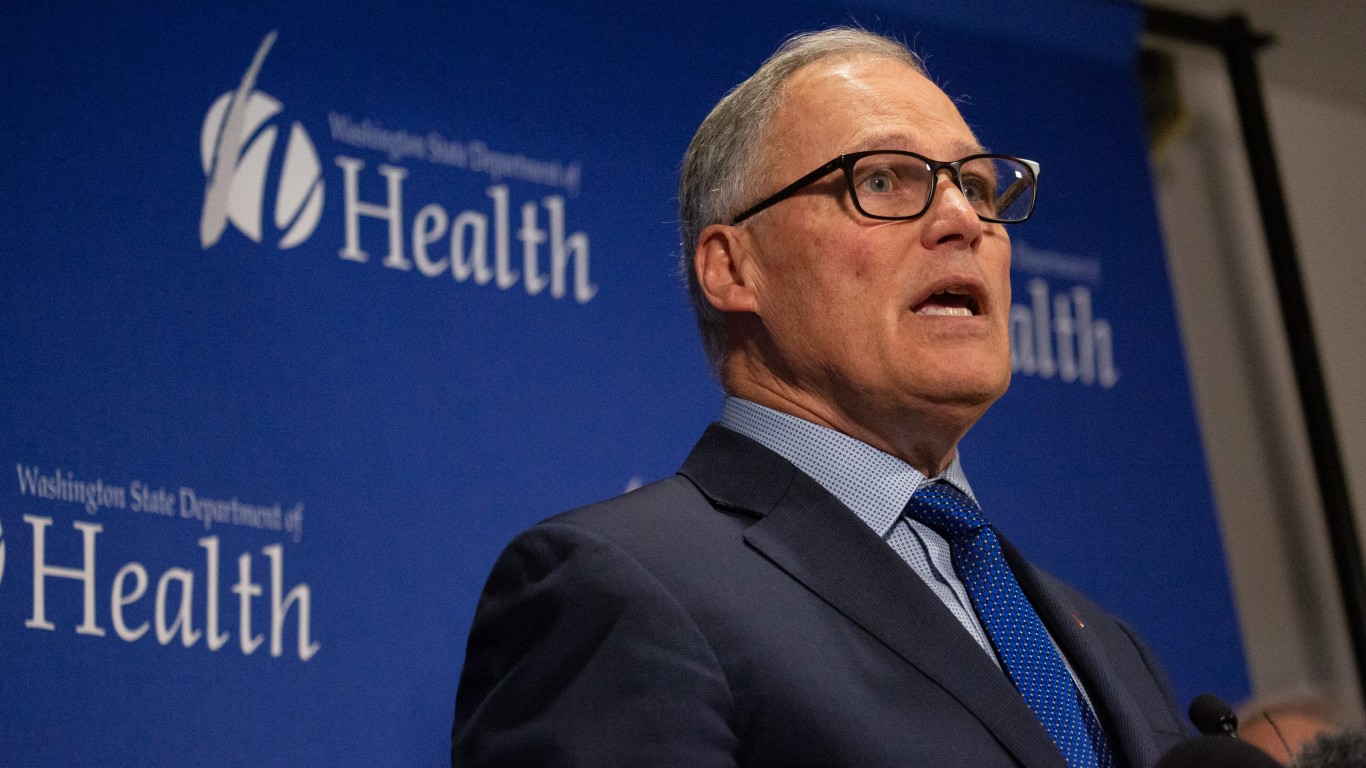
Jan 21: First coronavirus confirmed case in US
A man in his 30s who has just returned to Washington state from a trip to the region of Wuhan tests positive for the new coronavirus. He arrived in the U.S. two days before passenger screening was initiated.
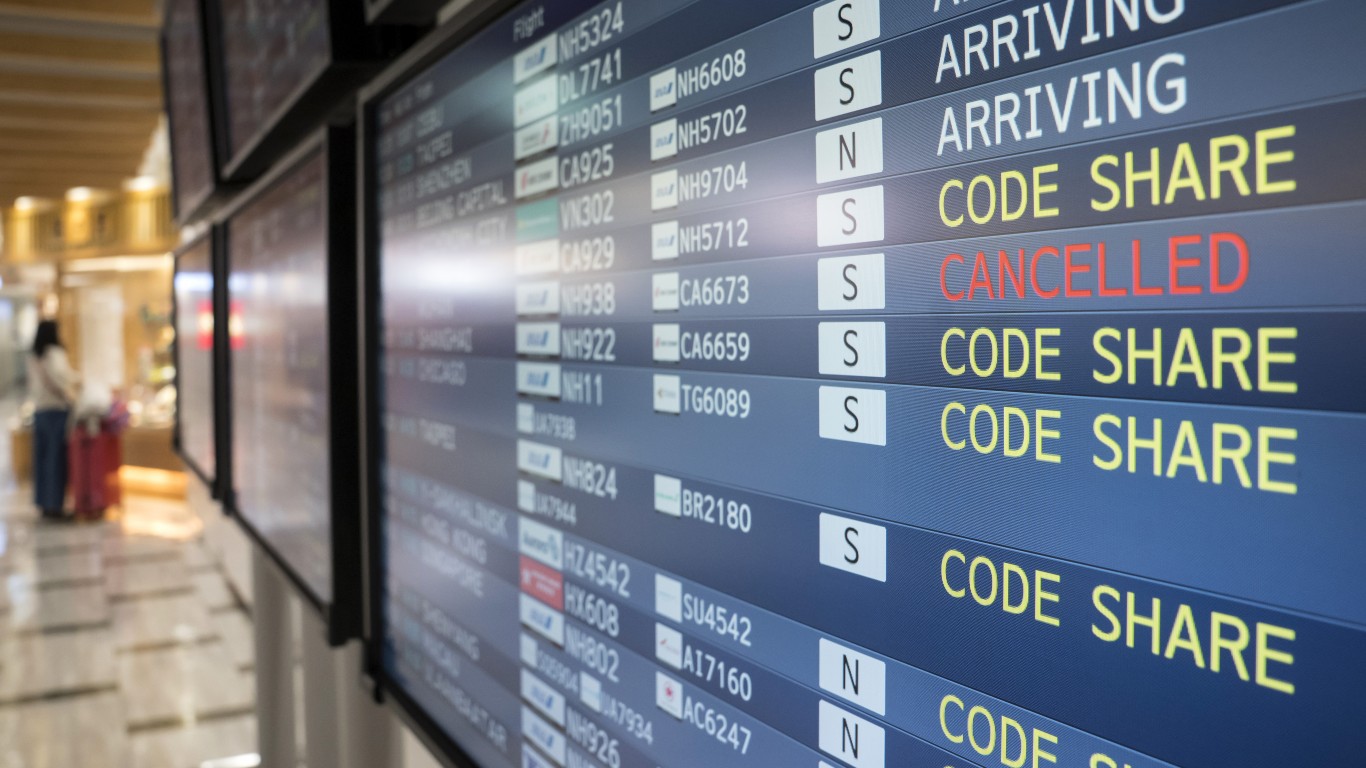
Jan 23: Chinese authorities close off Wuhan
Chinese authorities put Wuhan, a city of more than 11 million people and where the novel coronavirus was first reported, under lockdown. Bus, subway, and ferry services are suspended. Flights and trains are canceled. Residents are ordered to stay home.
[in-text-ad]

Jan 28: United Airlines suspends flights to China
United Airlines temporarily suspends some flights between the U.S. and three cities in China — Beijing, Hong Kong, and Shanghai — due to a drastic decline in demand.
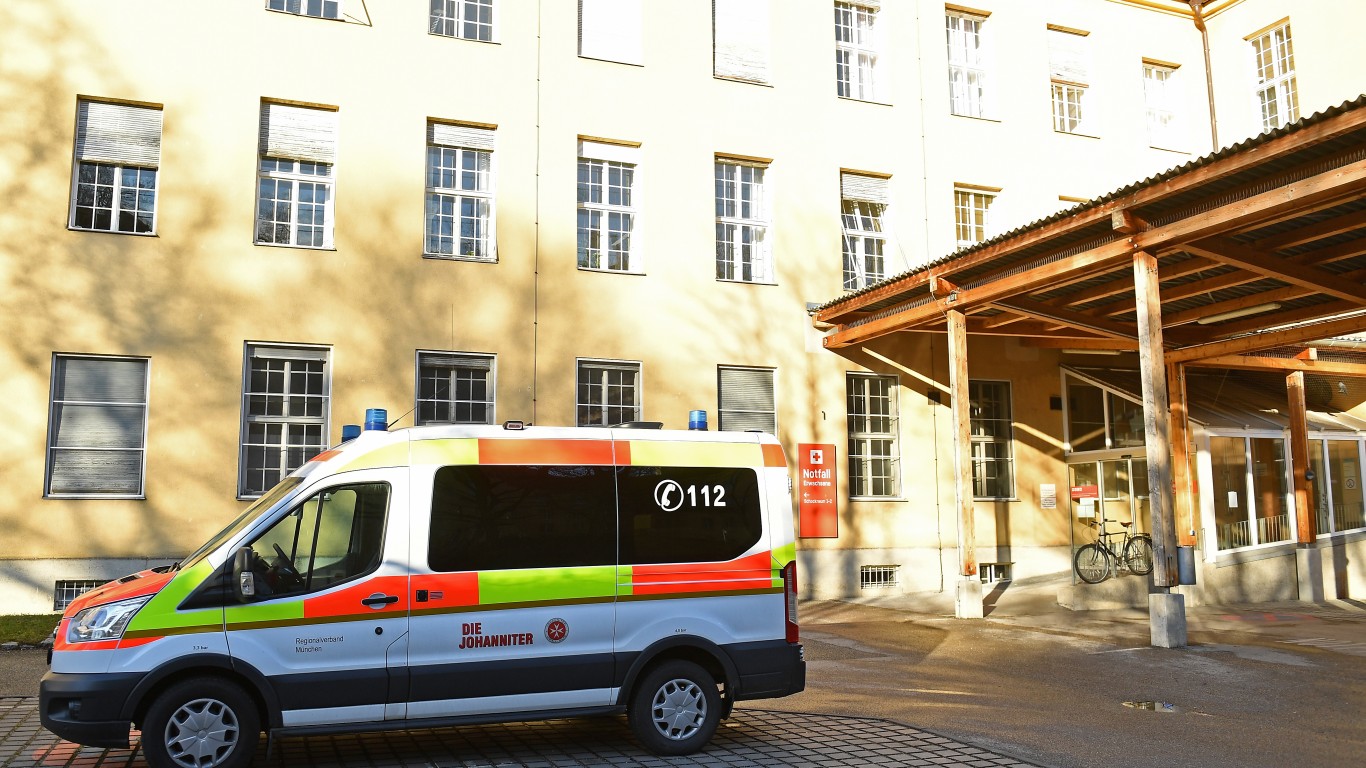
Jan 30: Evidence of asymptomatic transmission emerges
A woman from China infects a person in Germany before she begins displaying symptoms, according to a study published in the New England Journal of Medicine. This is the first evidence of people showing no symptoms appearing able to spread the coronavirus.
[in-text-ad-2]
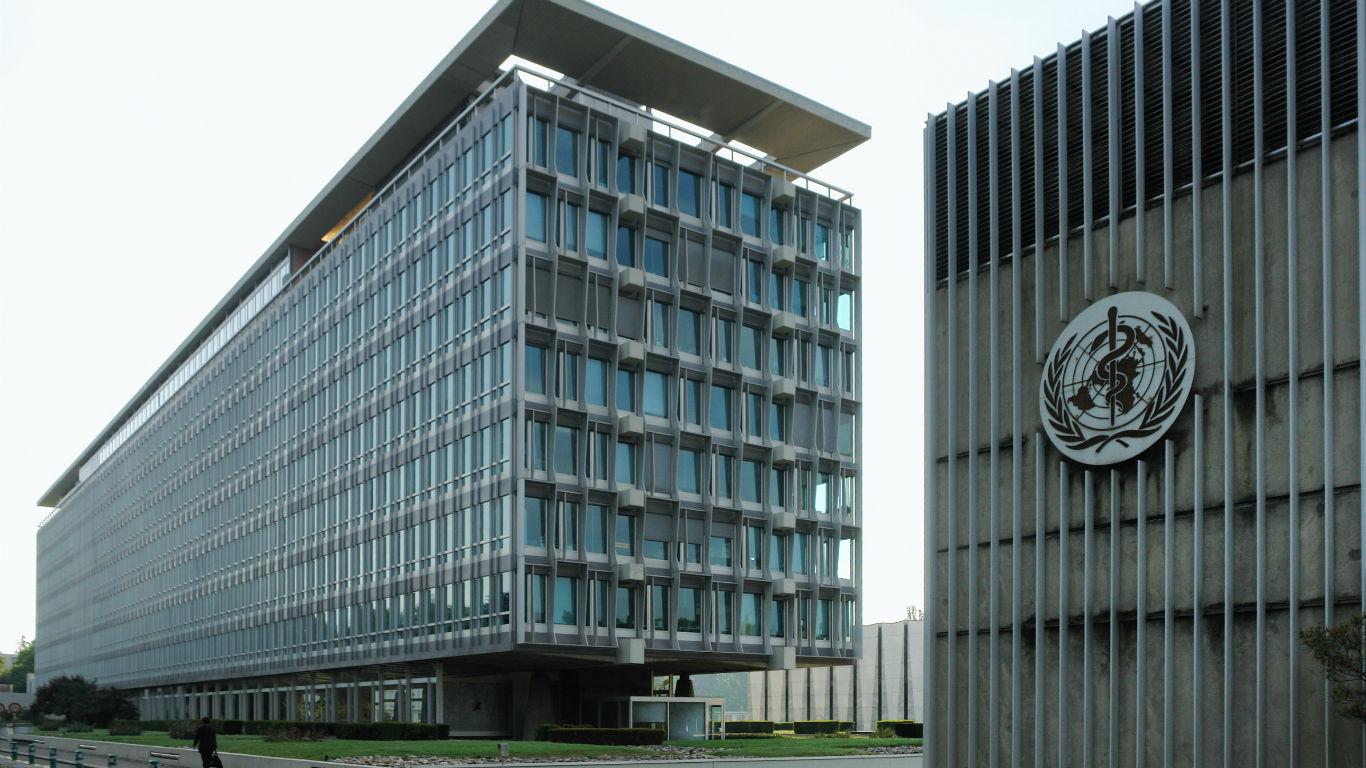
Jan 30: WHO declares the coronavirus outbreak a global emergency
With the situation evolving rapidly, within a week of saying the outbreak does not constitute an emergency declaration, the WHO declares the coronavirus outbreak a public health emergency of international concern.
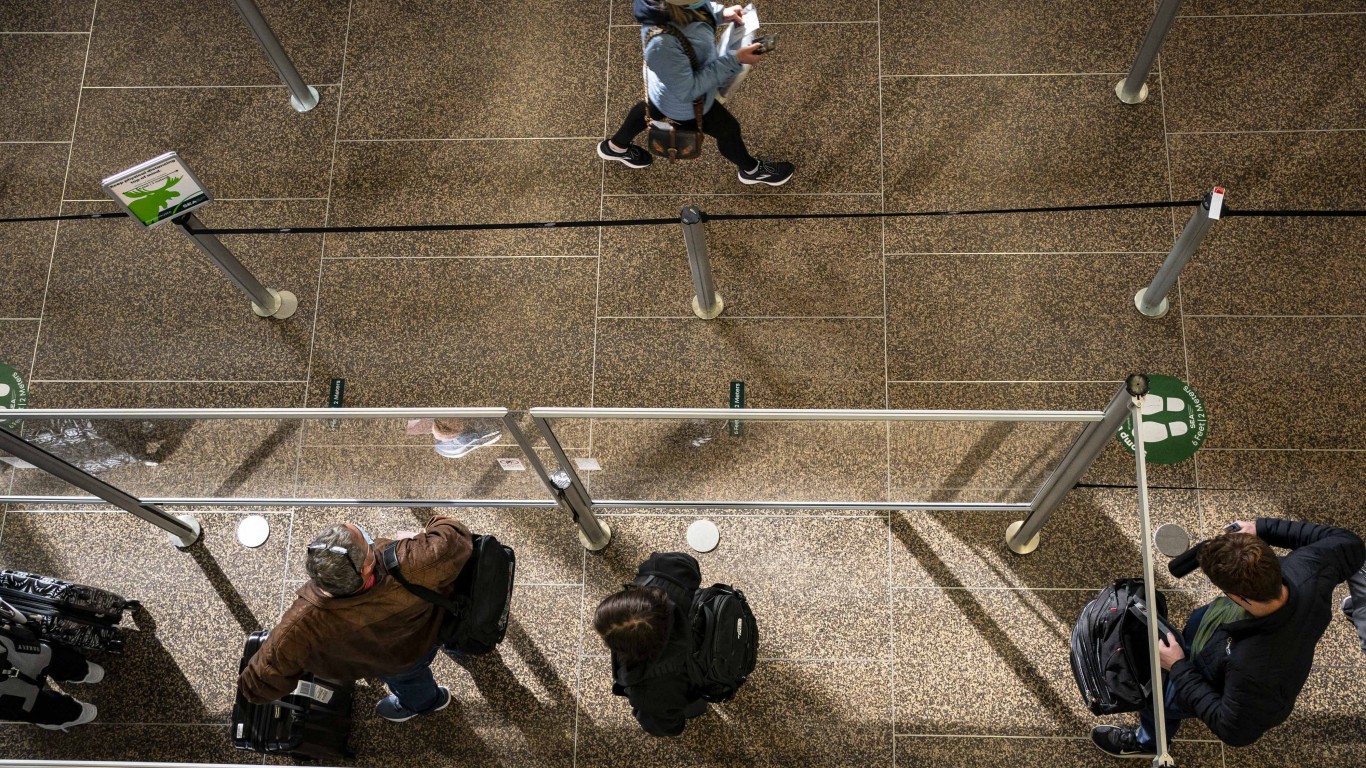
Jan 31: Trump restricts travel from China
While emphasizing that the risk of contracting the new coronavirus in the U.S. is low, the Trump administration announces it is suspending entry for most non-U.S. citizens coming from China or those who have recently been in China. The new measures include a mandatory 14-day quarantine period for U.S. citizens travelling back from Hubei Province.

Feb 1: First city outside of Hubei to implement lockdown measures
After Wuhan, Chinese authorities shut down Wenzhou, a city of about 9 million residents some 425 miles from the current epicentre of the coronavirus outbreak. Only one member of every household is allowed to leave every two days and only to buy necessities. There are 265 confirmed COVID-19 cases in Wenzhou.
[in-text-ad]

Feb 4: Diamond Princess cruise ship quarantined
A cruise ship with 2,666 passengers and 1,045 crew members is forced to quarantine at sea off the coast of Yokohama after one confirmed case of an infected passenger. Subsequent tests reveal that at least 10 of the 31 tested people have the virus as well.
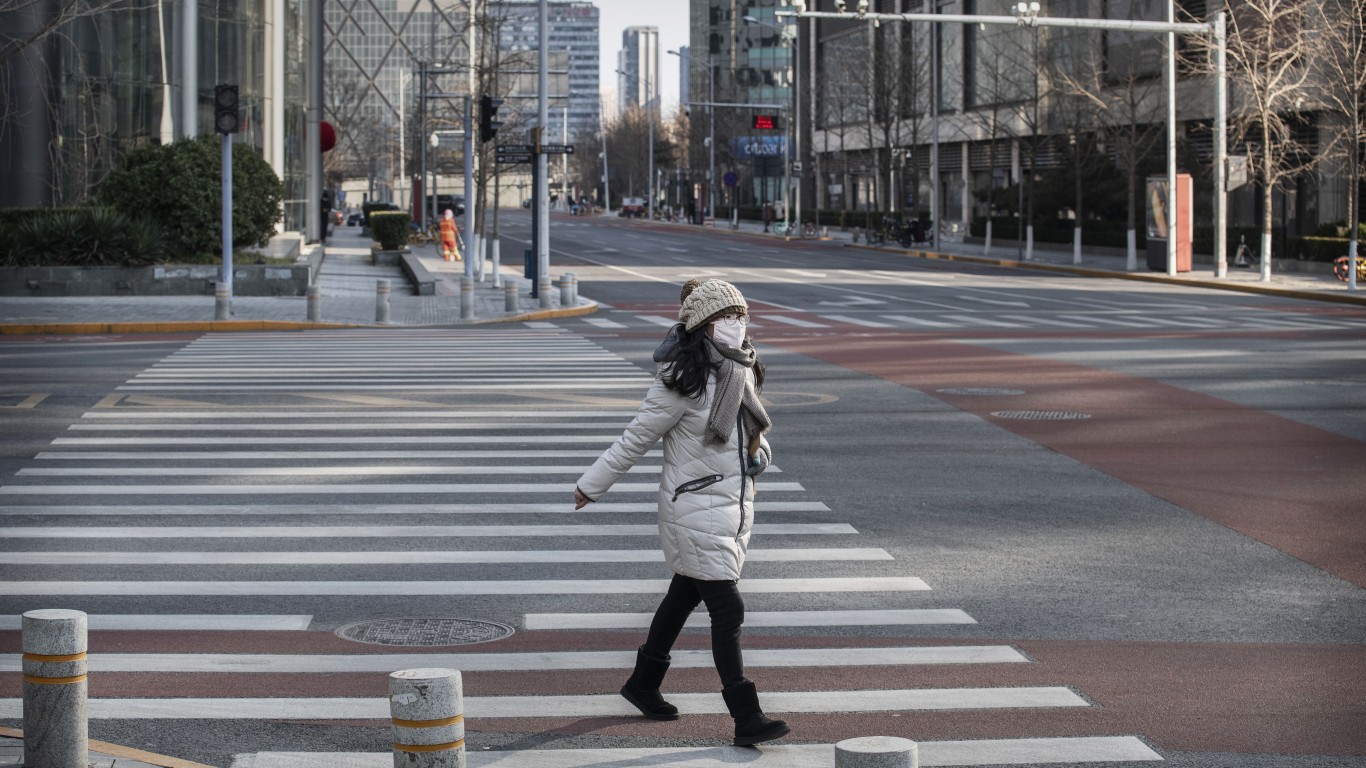
Feb 9: Death toll surpasses SARS epidemic toll
By Feb. 9, 2020, 908 people on mainland China have died, surpassing the number of deaths caused by the severe acute respiratory syndrome outbreak of 2002-2003. The SARS epidemic, which also began in China, killed 774 people worldwide.

Feb 11: Disease caused by the novel coronavirus is named COVID-19
The WHO announces the official names of the novel coronavirus and the illness it causes. The virus’s name is severe acute respiratory syndrome coronavirus 2 (SARS-CoV-2), and the illness it causes is the coronavirus disease of 2019, or COVID-19.
[in-text-ad-2]
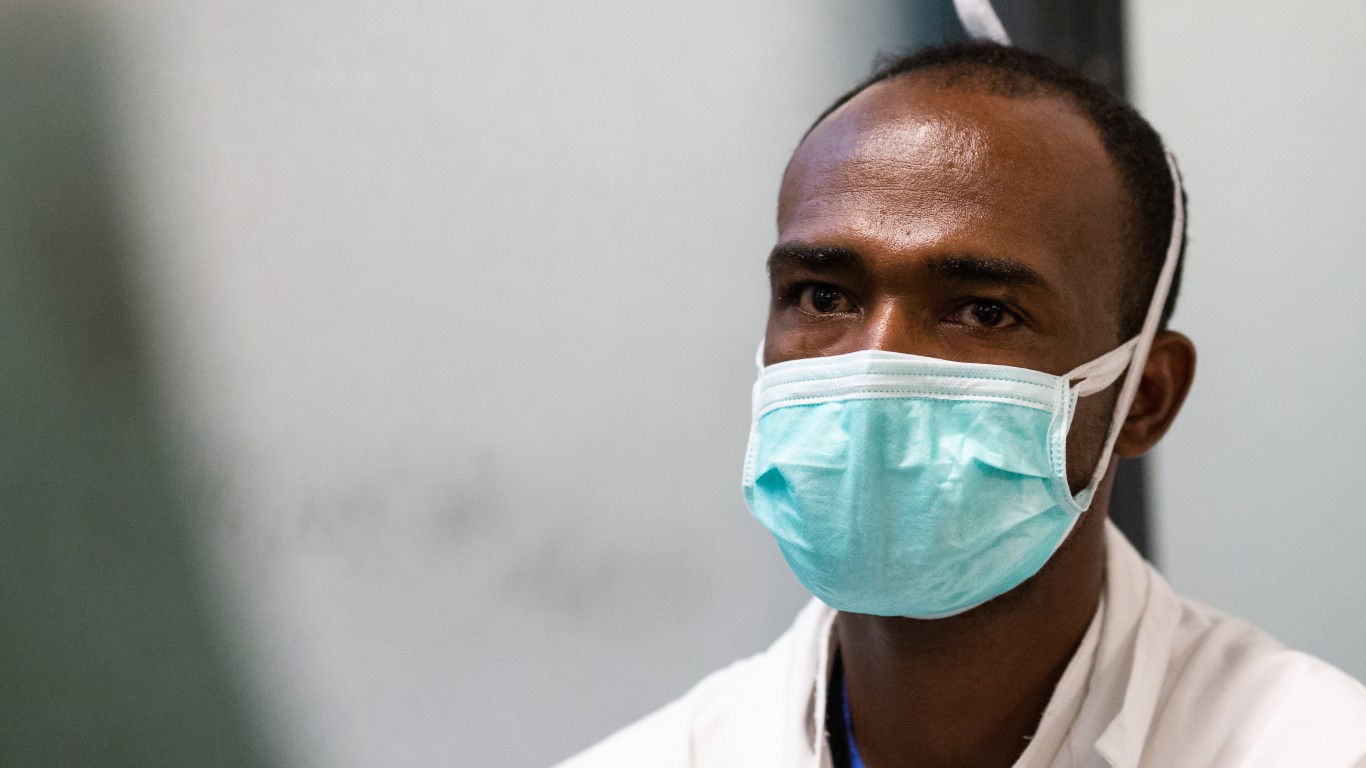
Feb 14: Egypt confirms first case — first in Africa
The first COVID-19 case in Africa is confirmed in Egypt. The infected person is asymptomatic and a foreigner, according to the health ministry.

Feb 15: Lockdowns extend to more than 760 million people in China
More than half of the entire Chinese population is now under various forms of lockdown and travel restrictions. Restrictions include residential lockdowns, checkpoints at buildings, and strict limits on going outside.
[in-text-ad]

Feb 19: COVID-19 death toll in China surpasses 2,000
After China reports 136 COVID-19-related deaths on Feb. 19 alone, the death toll in mainland China surpasses 2,000. However, the number of new cases a day appears to be falling.

Feb 25: San Francisco becomes the first US city to declare a state of emergency
San Francisco Mayor London Breed declares a state of emergency, even though no coronavirus cases have been confirmed in the city. He says this is a precaution as the order will expedite access to resources and personnel necessary to respond to a potential coronavirus outbreak in the city.
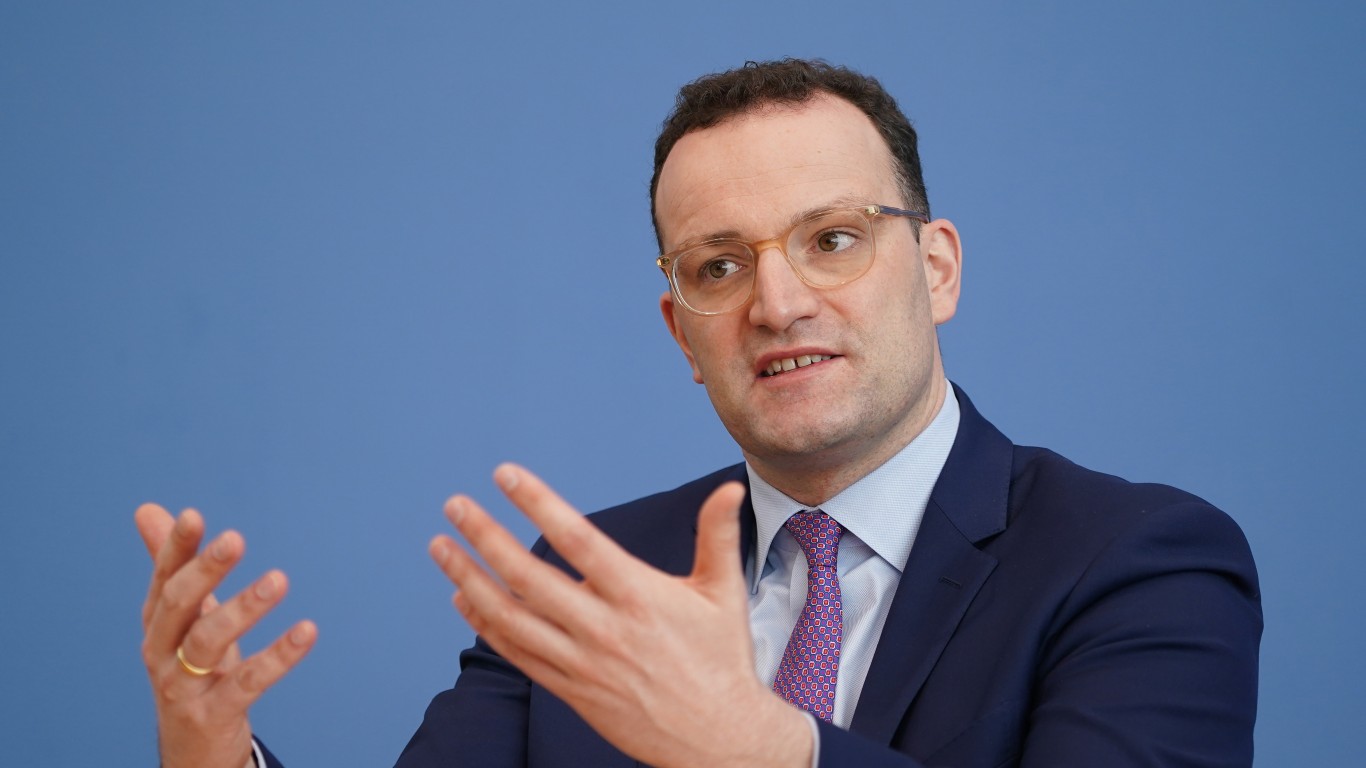
Feb 26: Germany announces the country is ‘at the beginning of an epidemic’
Germany has confirmed a total of 21 coronavirus cases. The health minister says the country is “at the beginning of an epidemic.”
[in-text-ad-2]
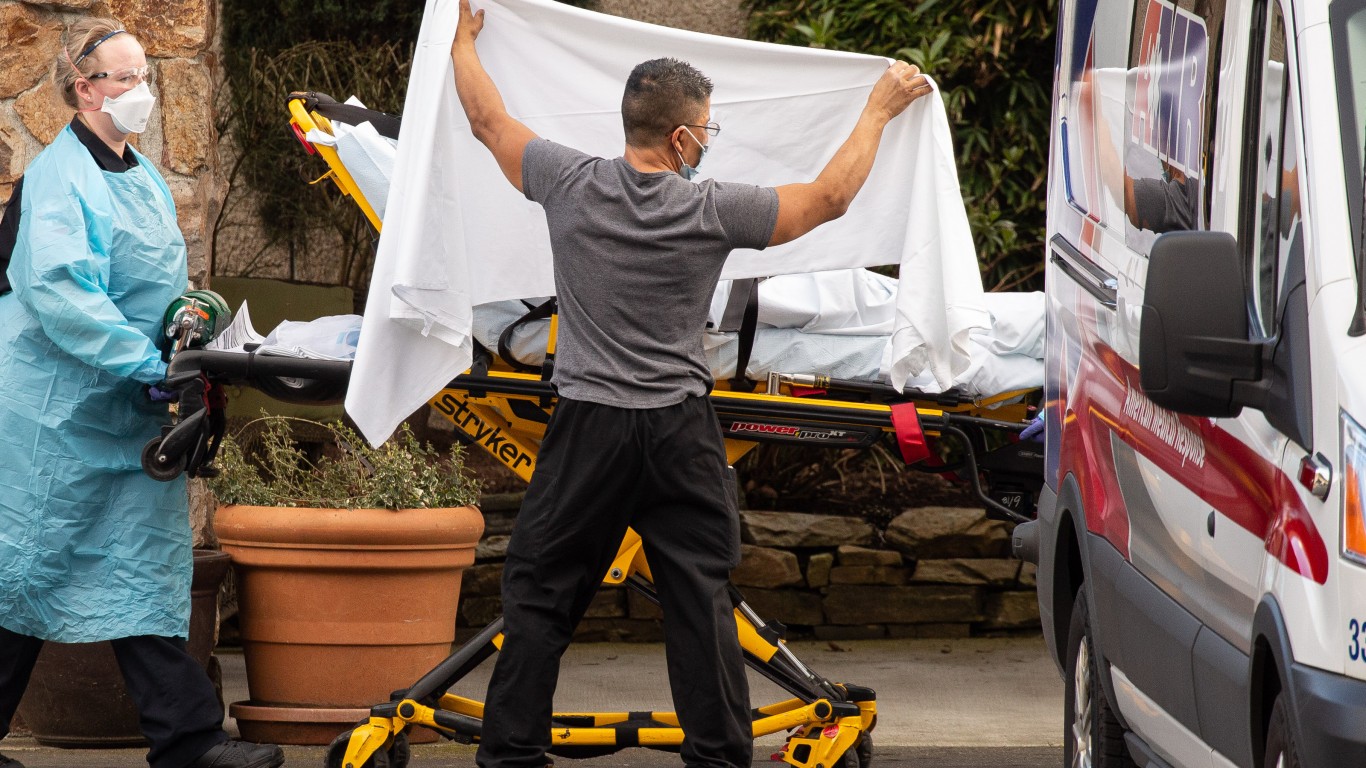
Feb 29: First death reported in US
A man in his 50s with preexisting conditions from Washington state is the first person in the U.S. to die from COVID-19. There is no evidence at the time that he was in close contact with an infected person.
Washington declares a state of emergency.
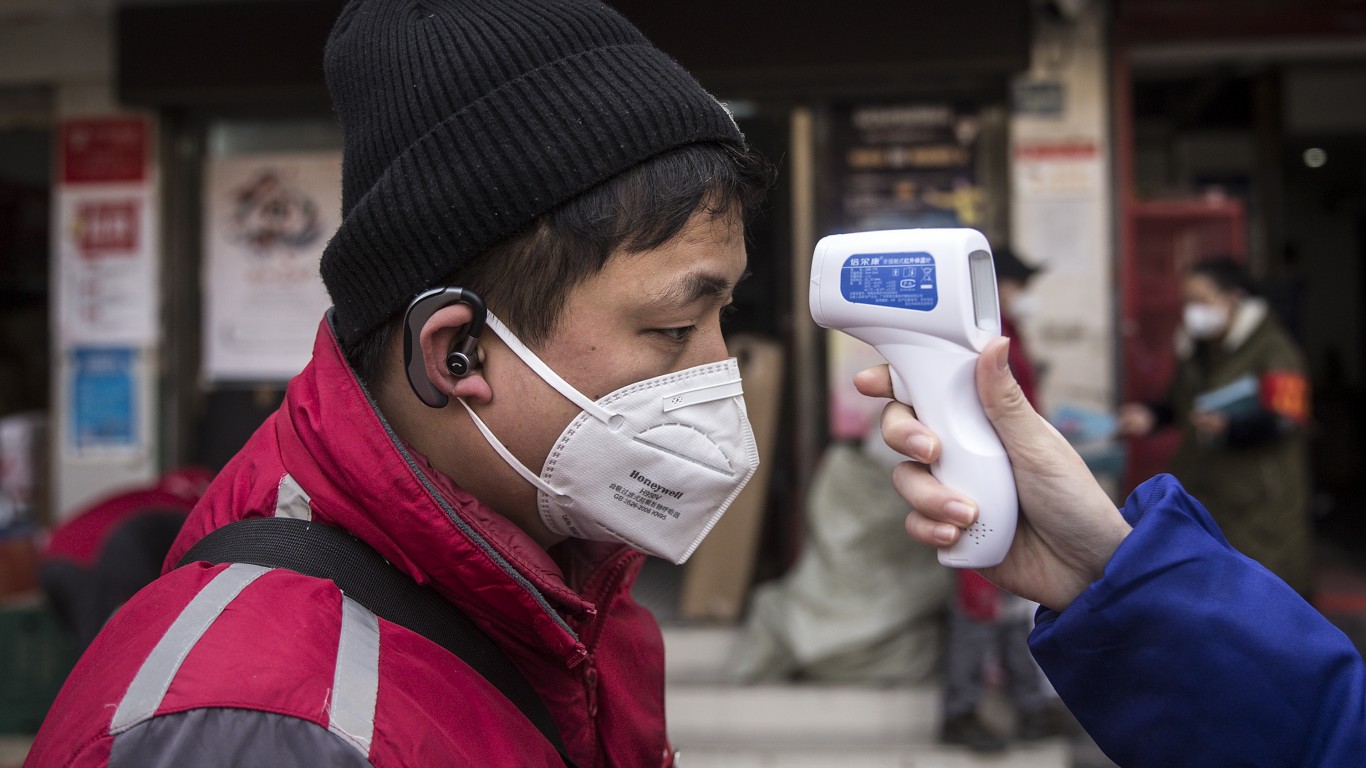
Mar 7: Global coronavirus cases hit 100,000
A total of 100,000 coronavirus cases have so far been confirmed worldwide. The WHO is calling the spread “deeply concerning” as several countries report their first cases of the disease over just a few days.
[in-text-ad]

Mar 11: WHO declares coronavirus a pandemic
The WHO declares COVID-19 a pandemic. The organization made the assessment after two weeks during which the number of new COVID-19 cases outside mainland China has increased 13-fold, and the number of affected countries has tripled.

Mar 13: Trump declares national emergency
President Donald Trump declares a national emergency to “unleash the full power of the federal government” in dealing with the coronavirus pandemic as cases across the U.S. increase.
Mar 17: Coronavirus now present in all 50 states
West Virginia is the last state to report a case of the novel coronavirus.
[in-text-ad-2]
Mar 17: EU closes its borders to all nonessential travel
The 26 countries of the European Union, home to over 400 million people, announce a coordinated ban on all nonessential travel from non-member countries for 30 days. The U.K., which is no longer part of the EU, does not take part in the ban.

Mar 19: Italy’s death toll surpasses China’s
Italy’s death toll from COVID-19 reaches 4,032 as the country becomes the first to surpass China in number of deaths. Italy reports 627 people died of the disease on March 19. In China, 3,249 people have died from COVID-19 by March 19.
[in-text-ad]
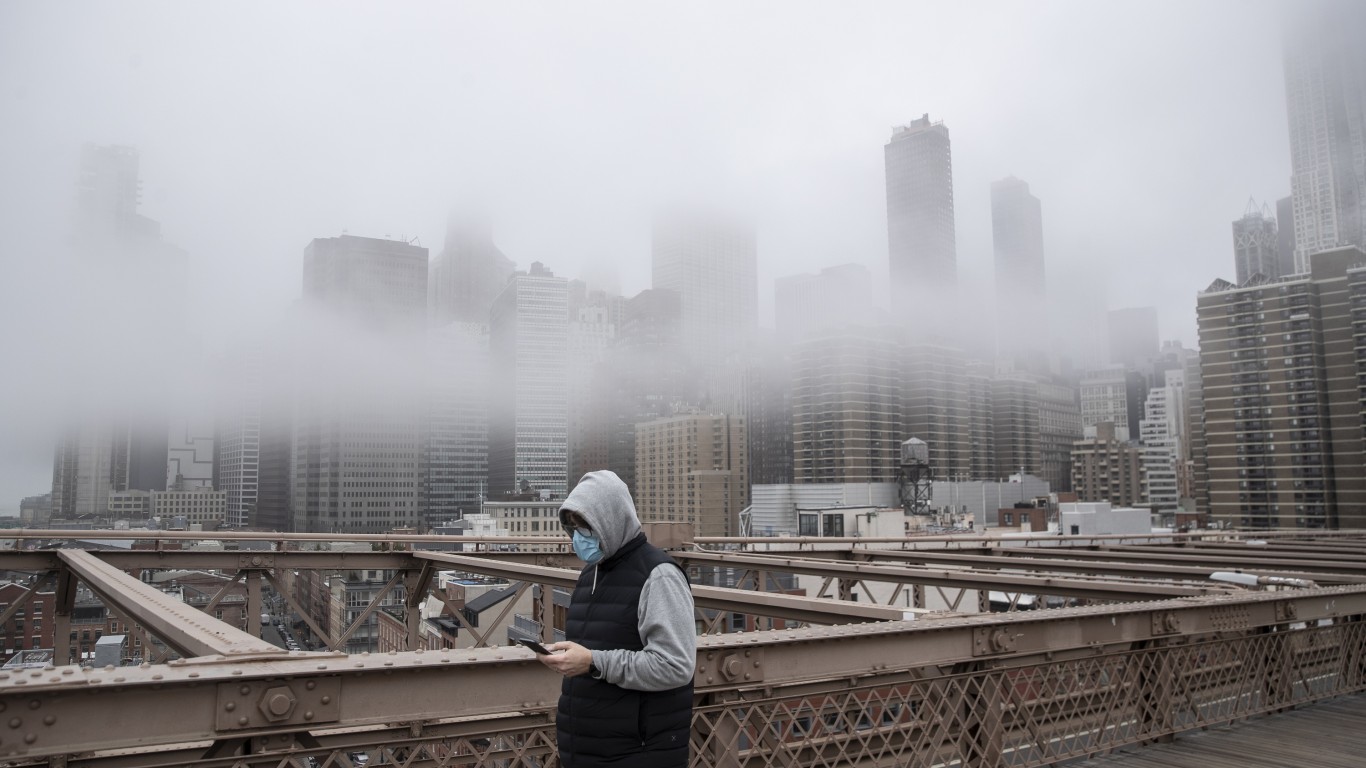
Mar 20: New York City becomes US outbreak hotspot
With cases of confirmed coronavirus cases Increasing from 183 to 5,151 in six days, New York City becomes the hardest hit by the pandemic in the U.S. There are a total of 8,377 reported cases in the entire state.
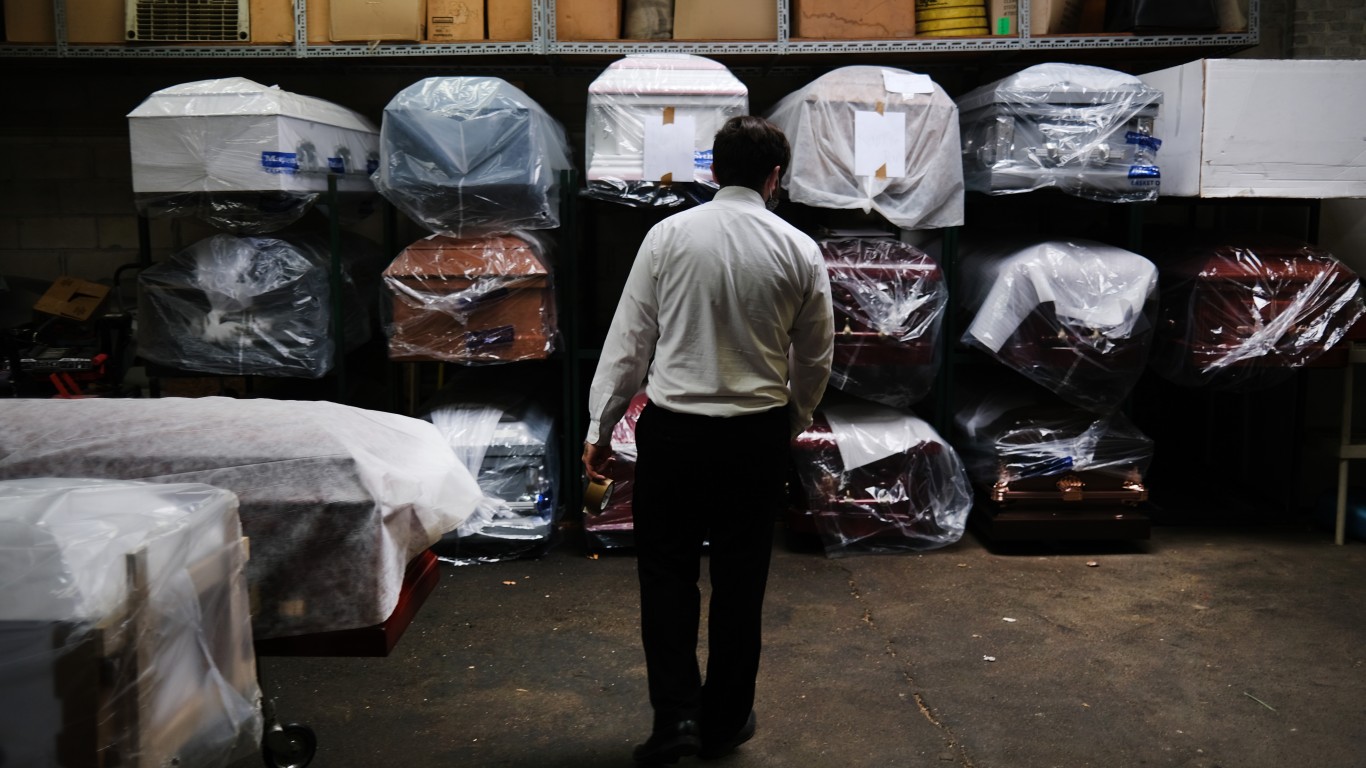
Mar 22: Global cases double in a week, reaching almost 330,000
The number of confirmed coronavirus cases worldwide more than double in a week to nearly 330,000.
The U.S. surpassed 32,000 confirmed cases, 10 times as many as the week before.
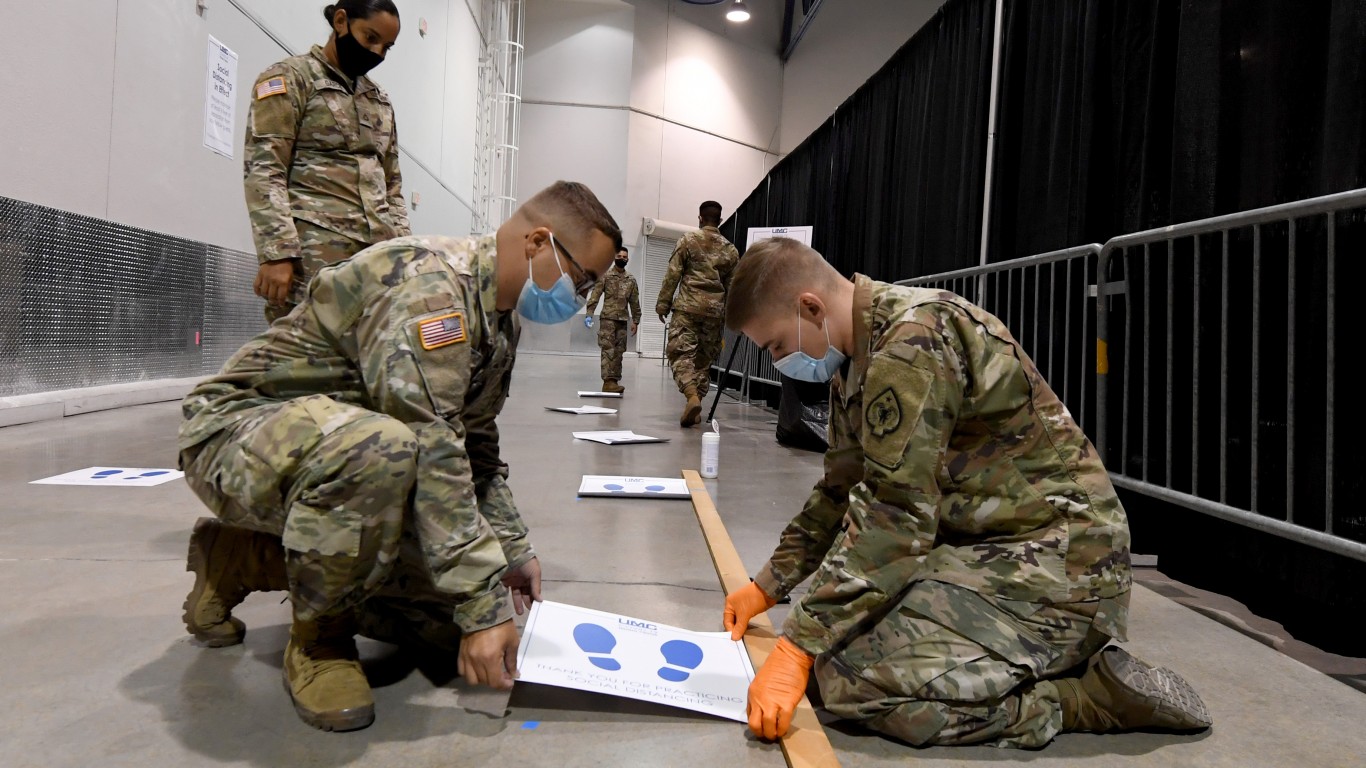
Mar 24: US National Guard activated in all 50 states
The U.S. military expands its coronavirus response effort. The National Guard is now active across the country. They are to assist state response efforts to mitigate and control the coronavirus pandemic.
[in-text-ad-2]
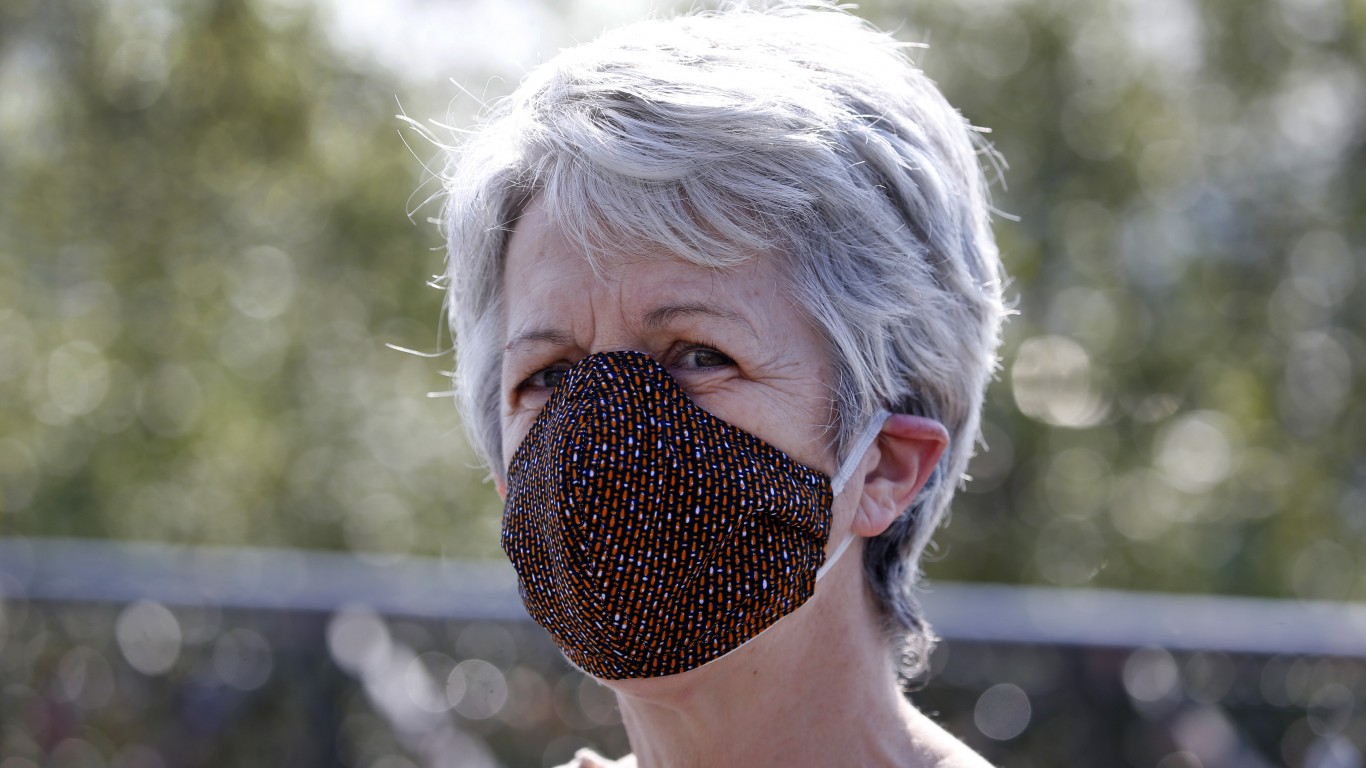
Mar 25: Lockdowns affect nearly one-third of the world’s population
Partial and total lockdowns in the U.S., India (population: 1.4 billion), and other countries now affect about one-third of the world’s population — about 2.5 billion people.

Mar 31: Model suggests US coronavirus death toll to reach 100,000
Scientists say that the coronavirus pandemic is estimated to kill between 100,000 and 240,000 people in the U.S., warning the death toll can be much higher if people don’t follow guidelines for public health measures like social distancing.
[in-text-ad]
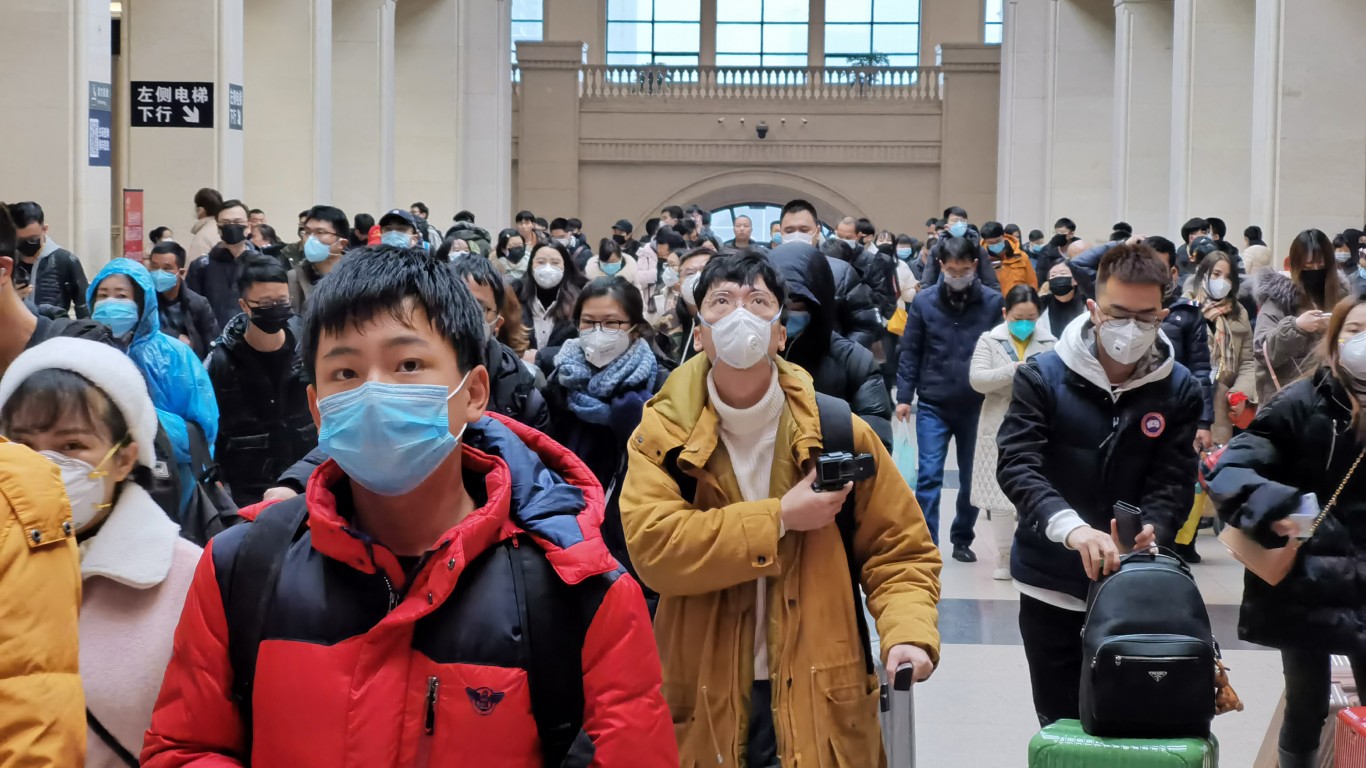
Apr 1: CDC reports transmission can occur before symptom onset
The Centers for Disease Control and Prevention reports on evidence of COVID-19 transmission from pre-symptomatic people. This would make containment much more difficult. About 12.6% of transmissions in Hubei Province, China, may have occurred before the infected person began showing symptoms. It can take up to 14 days for an infected person to show symptoms — if at all.
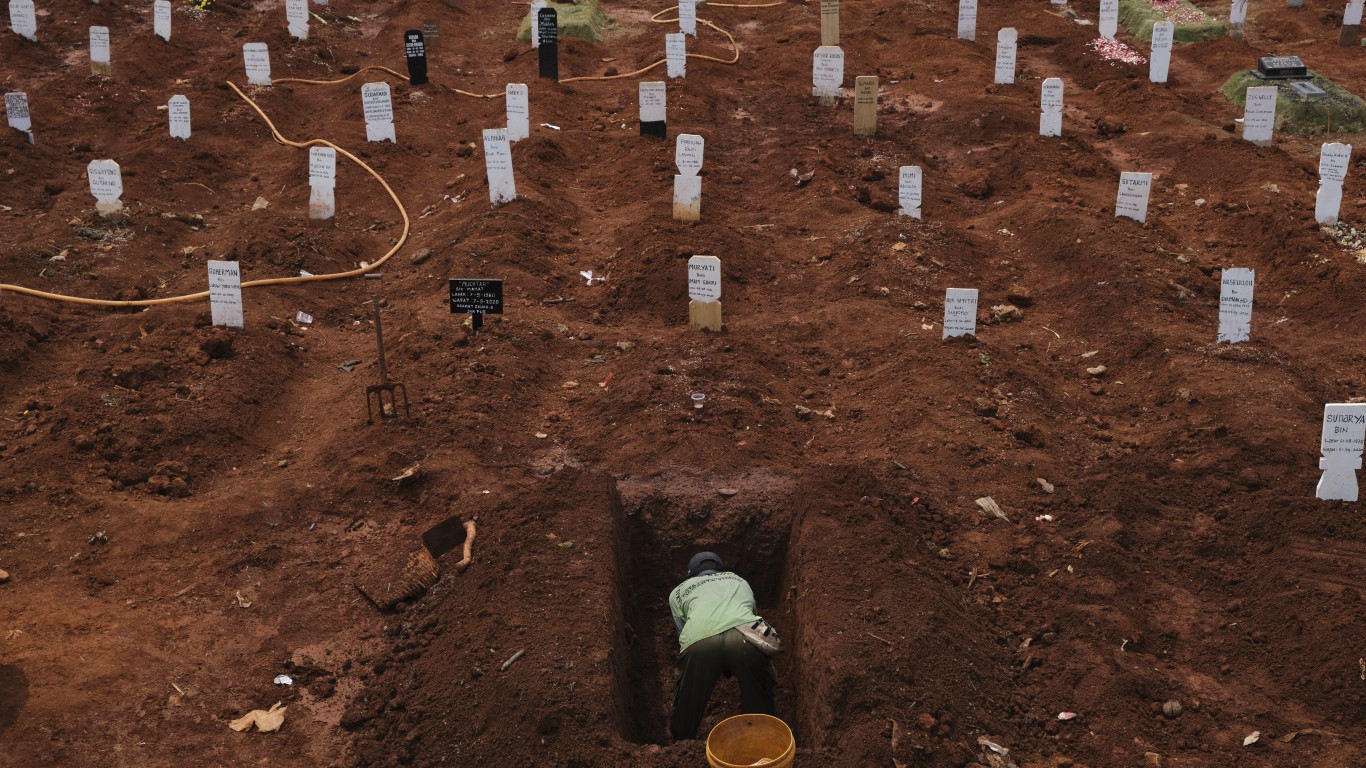
Apr 2: Global cases hit 1 million
The coronavirus pandemic hits a grim milestone — 1 million confirmed cases. More than 51,000 people worldwide have died.
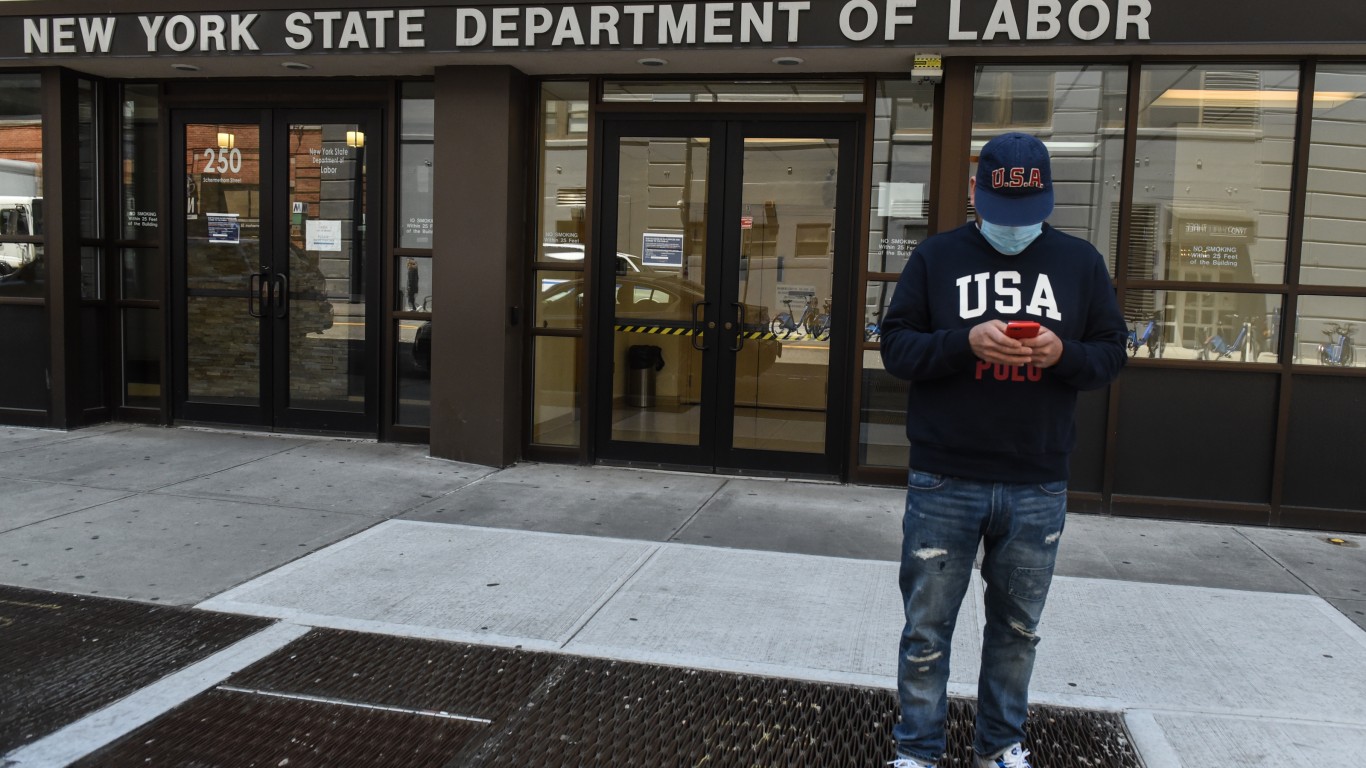
Apr 2: Over 10 million Americans file for jobless claims
A record 6.6 million people filed new unemployment claims in the week ending on March 28, more than double the number of claims filed the previous week. Overall, more than 10 million Americans applied for unemployment benefits in March.
[in-text-ad-2]
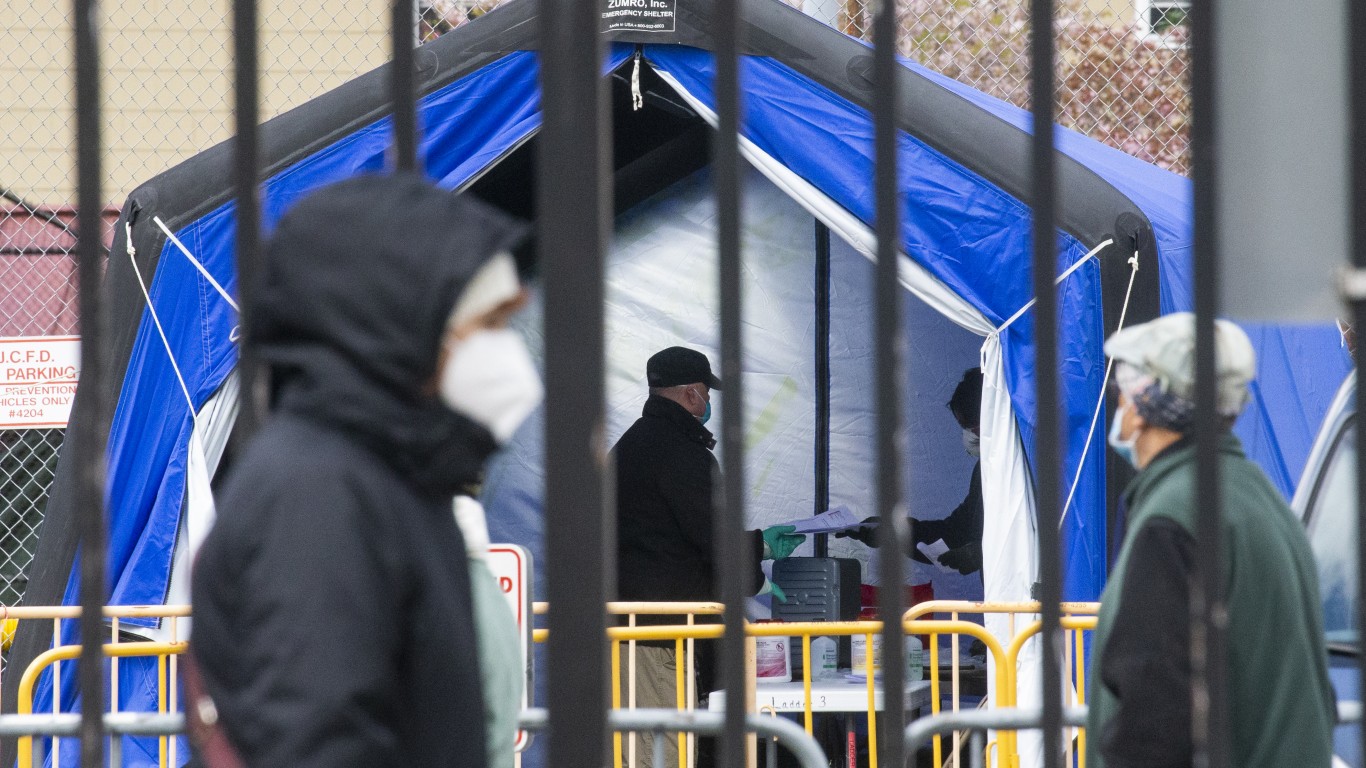
Apr 8: NJ first state to issue a face covering mandate
Gov. Phil Murphy signs an executive order, which also requires people to wear cloth face coverings unless they are under 2 years old or have a medical condition that can make breathing with a mask difficult.
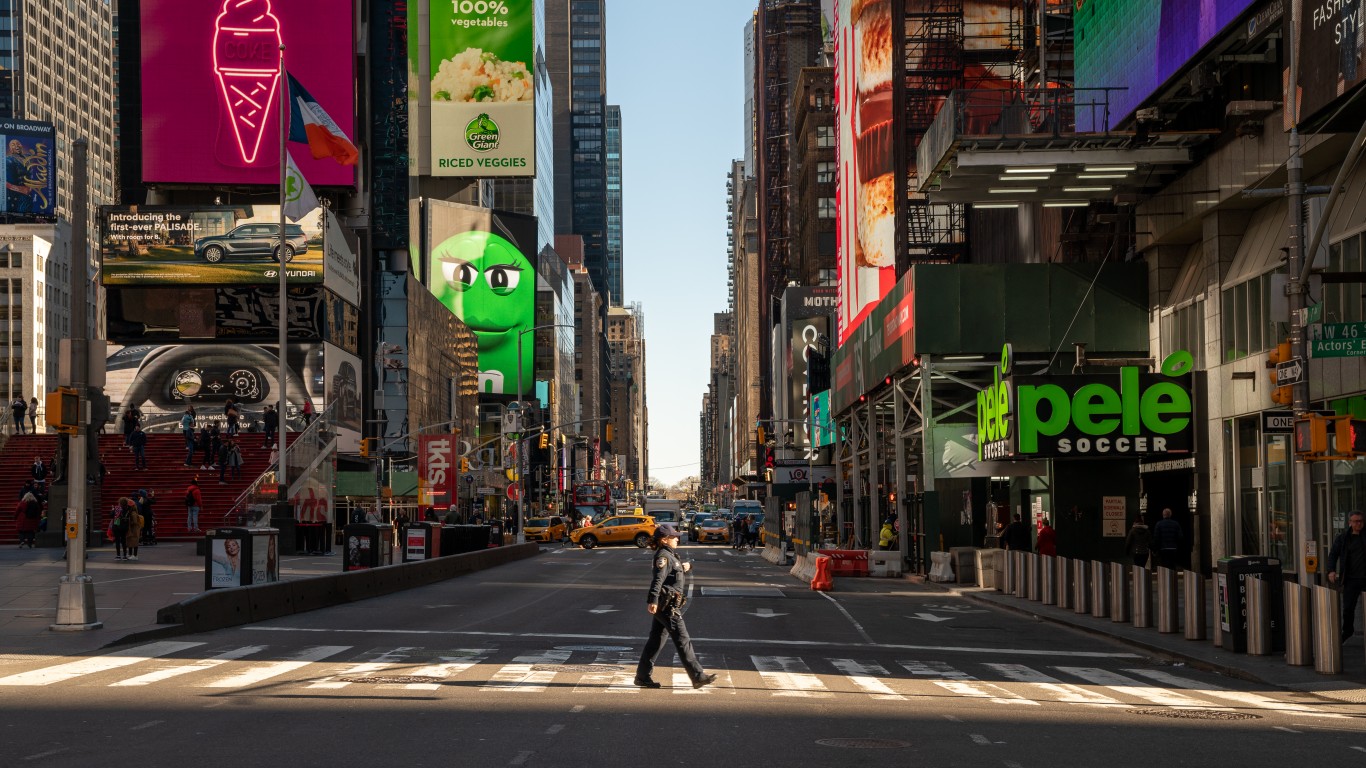
Apr 10: New York reports more coronavirus cases than any country
New York state cumulative caseload is higher than any single country outside the U.S., at nearly 160,000. (U.S.’s cumulative caseload is 462,000 cases). Spain has reported 153,000 cases by April 10, and Italy 143,000. China, where the novel coronavirus was first detected, has reported 82,000 cases by that date.
[in-text-ad]
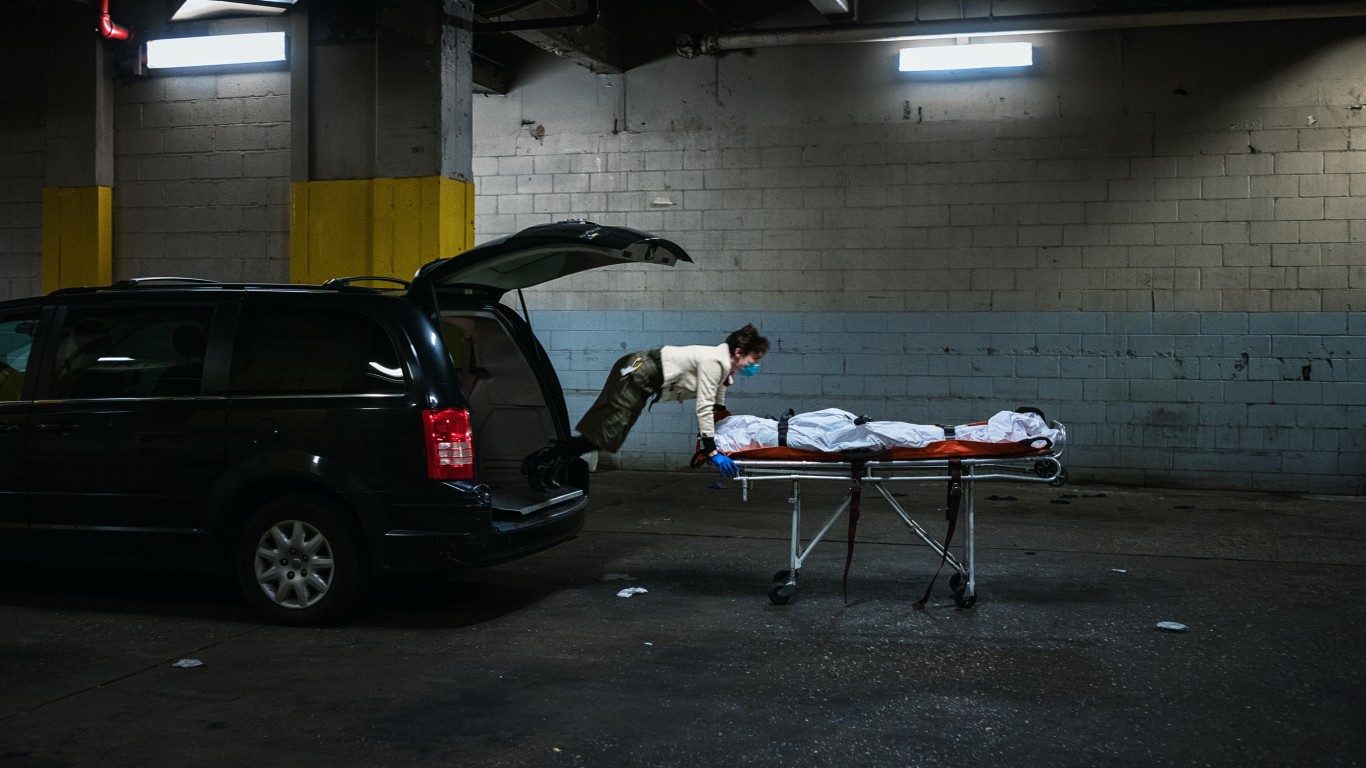
May 27: US reaches 100,000 COVID-19 deaths
The U.S. reaches another bleak coronavirus milestone — 100,000 people have died from COVID-19 in the fourth month since the novel coronavirus was first confirmed in the country.
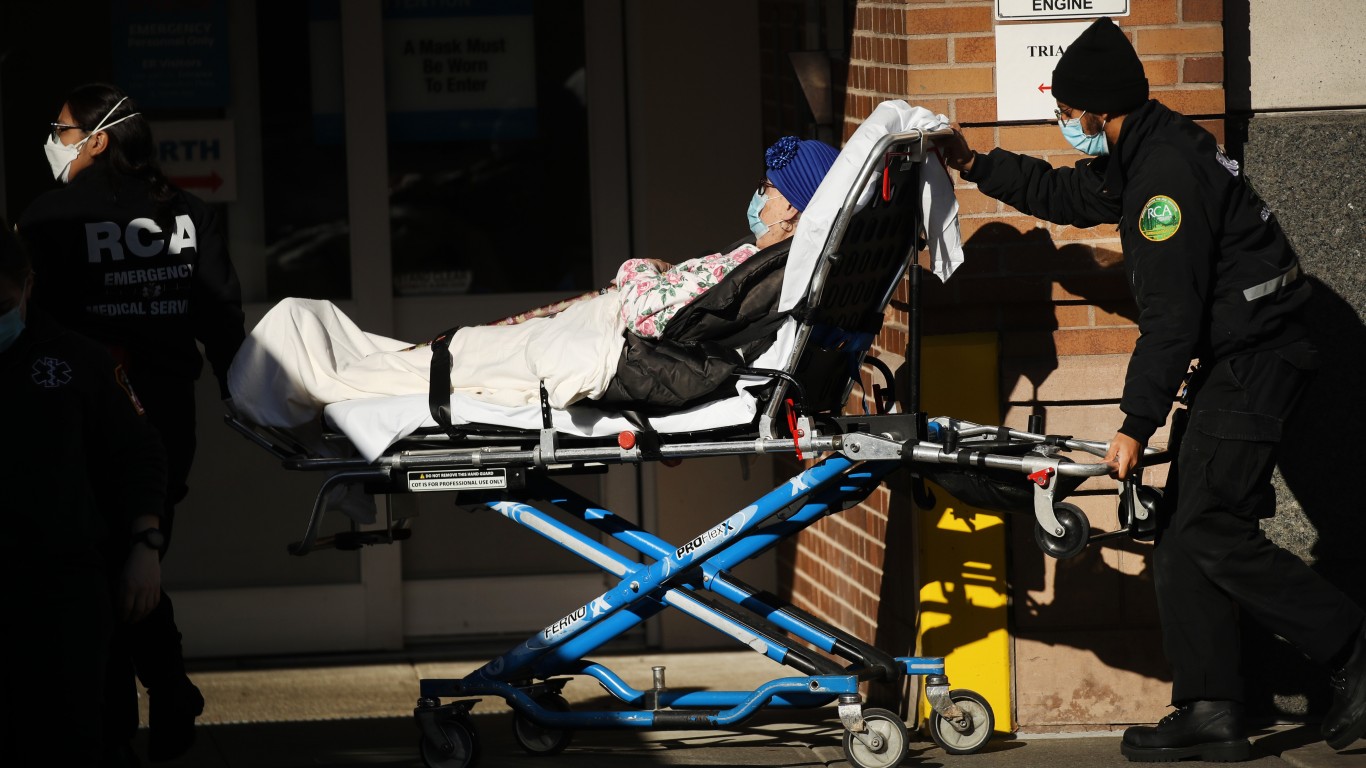
Jun 8: Lockdown measures worldwide may have prevented 500 million COVID-19 infections
Lockdowns, social distancing, travel restrictions, and other measures taken to slow down the coronavirus spread may have prevented about 500 million coronavirus infections in six countries, including China and the U.S., according to a study published in the journal Nature.

Jun 29: Global coronavirus death toll surpasses 500,000
Half a million people around the world have died from COVID-19, the disease the novel coronavirus causes. About a quarter of the fatalities are in the U.S. The WHO warns that the worst of the pandemic is yet to come.
[in-text-ad-2]
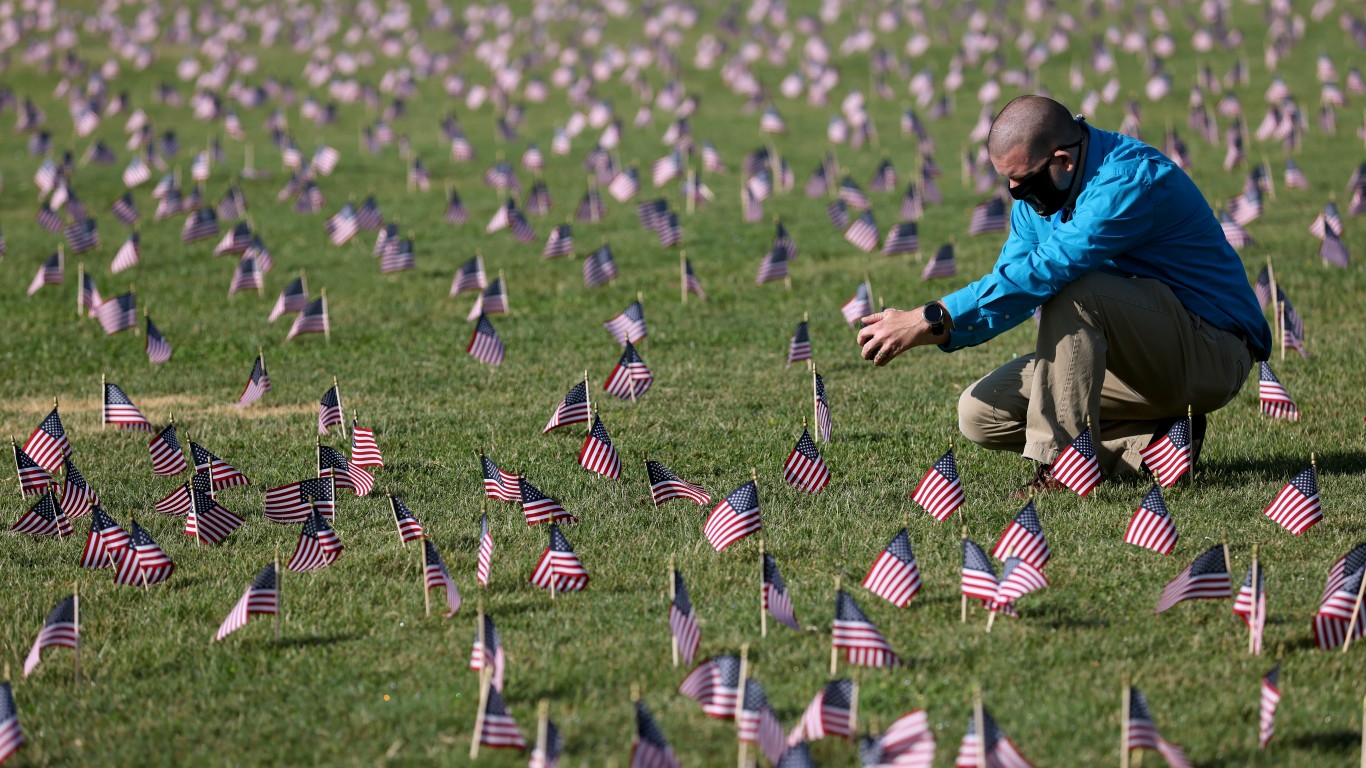
Jul 2: US reports over 55,000 new coronavirus cases, a global daily record
The U.S. reaches a global record for new daily coronavirus cases, reporting more than 55,000 new COVID-19 cases on July 2 in a day. The U.S. reports 55,274 confirmed cases on July 2, exceeding the previous single-day record of 54,771, set by Brazil on June 19.
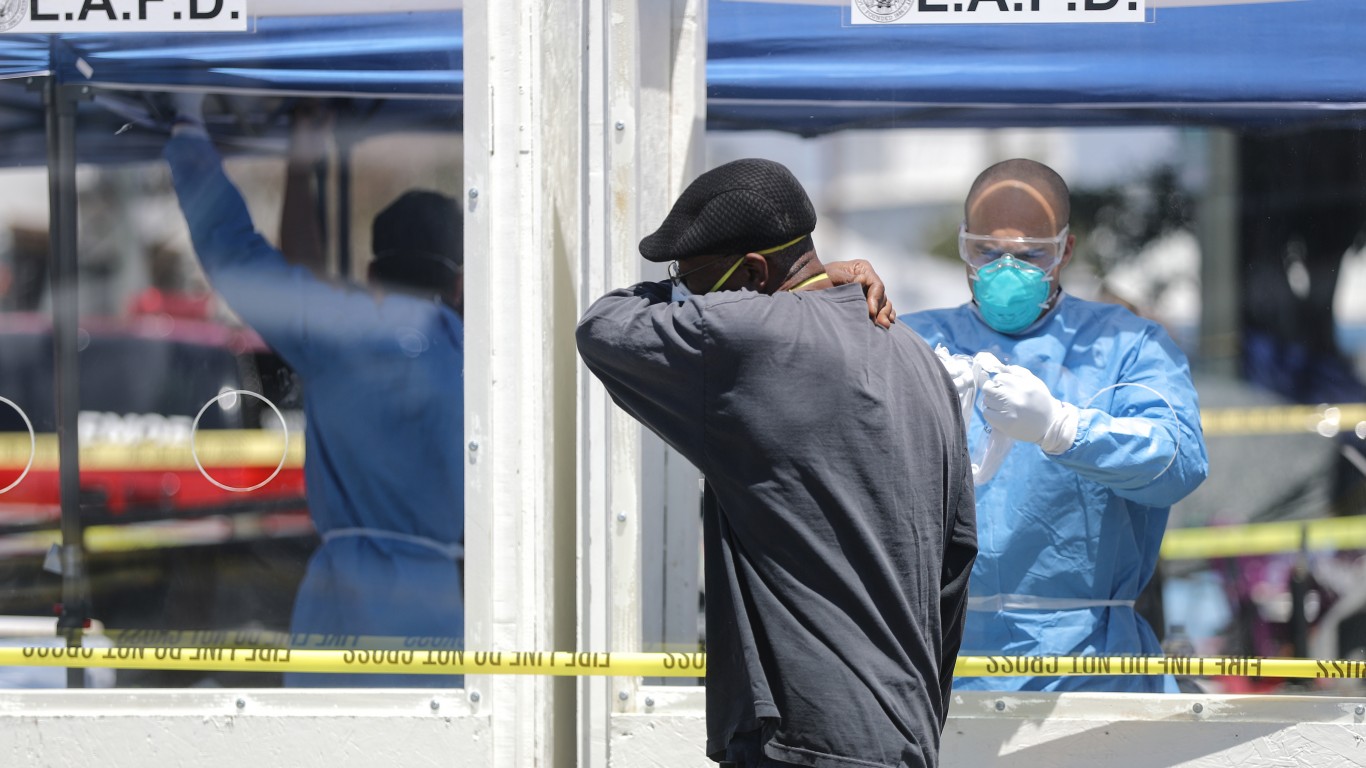
Jul 7: WHO acknowledges growing evidence of airborne coronavirus spread
The WHO acknowledges that there is emerging evidence that the coronavirus can be spread by tiny particles suspended in the air. So far, scientists have warned of spread by large droplets. The evidence of airborne spread means that transmission could not be ruled out in public settings, even when social distancing and masking is maintained and especially in crowded, closed or poorly ventilated settings, according to a WHO official.
[in-text-ad]
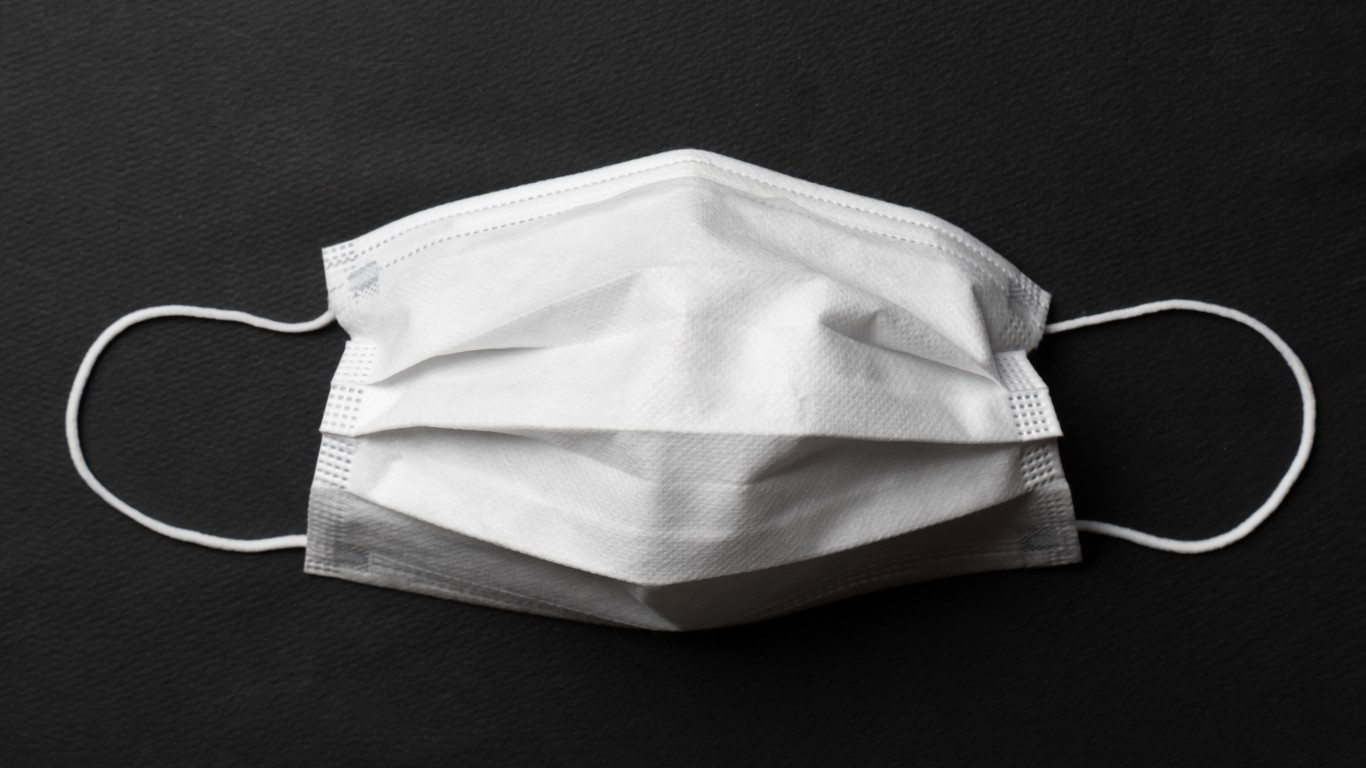
Jul 11: Trump wears a mask in public for the first time
Trump wears a mask during a visit to a military hospital, marking the first time the president is seen wearing a face covering in public. Previously, Trump has declined to wear a mask at news conferences, rallies, and other public events.

Aug 11: Russia first to approve a COVID-19 vaccine
Russia announces that its health regulator has approved a coronavirus vaccine for widespread use, becoming the first country in the world to do so. The news, however, is met with much criticism by scientists across the world who condemn Russia for skipping large trials to test the vaccine’s safety and efficacy.

Aug 24: First case of COVID-19 reinfection reported in Hong Kong
A 33-year-old man in Hong Kong is reported to have contracted the virus again, about 4.5 months after first being infected with the novel coronavirus. Still, little remains known about the body’s immunity to COVID-19, if any, the body develops after being exposed to the virus against the novel coronavirus once it has been exposed to it.
[in-text-ad-2]
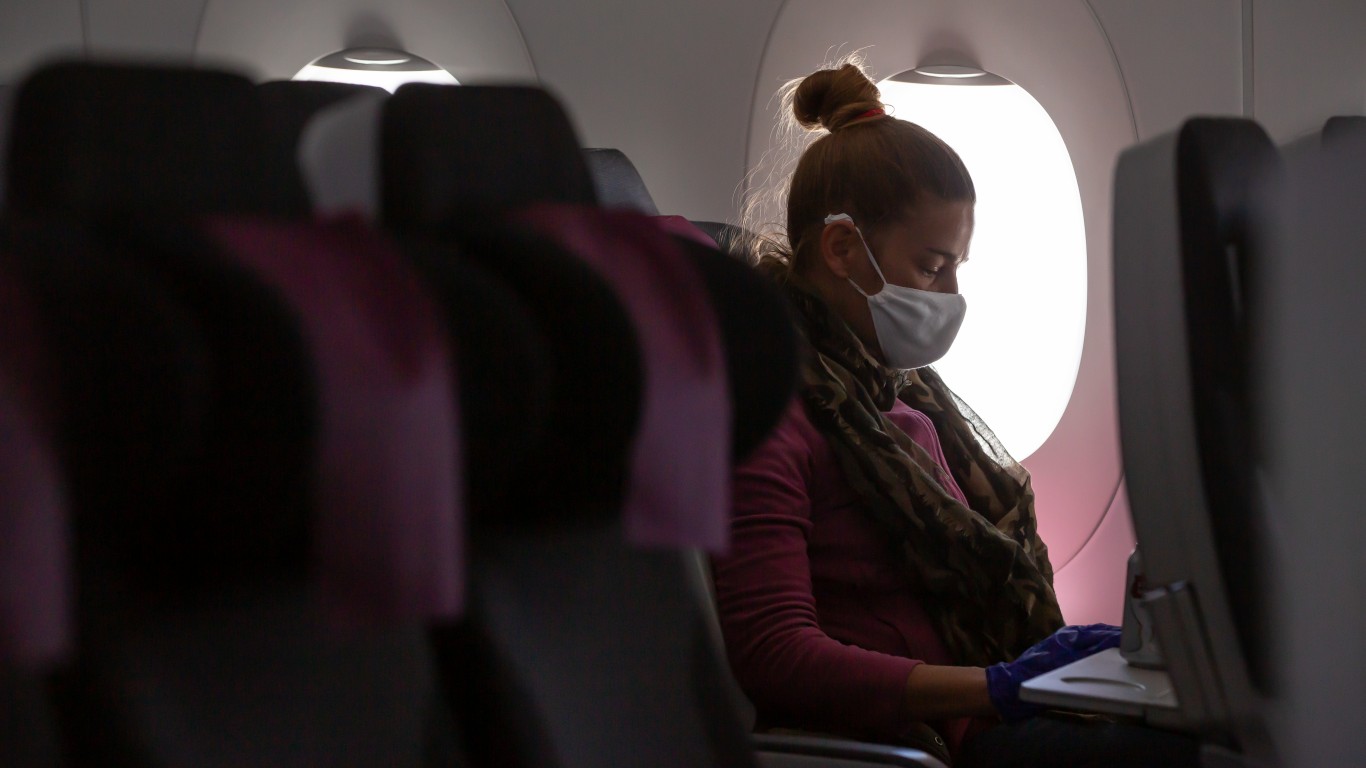
Sep 9: US to stop screening international arrivals for COVID-19
The U.S. announces it will no longer screen passengers arriving from other countries for COVID-19 and that international flights will no longer be required to fly into one of the 13 airports where enhanced coronavirus screening measures are carried out.
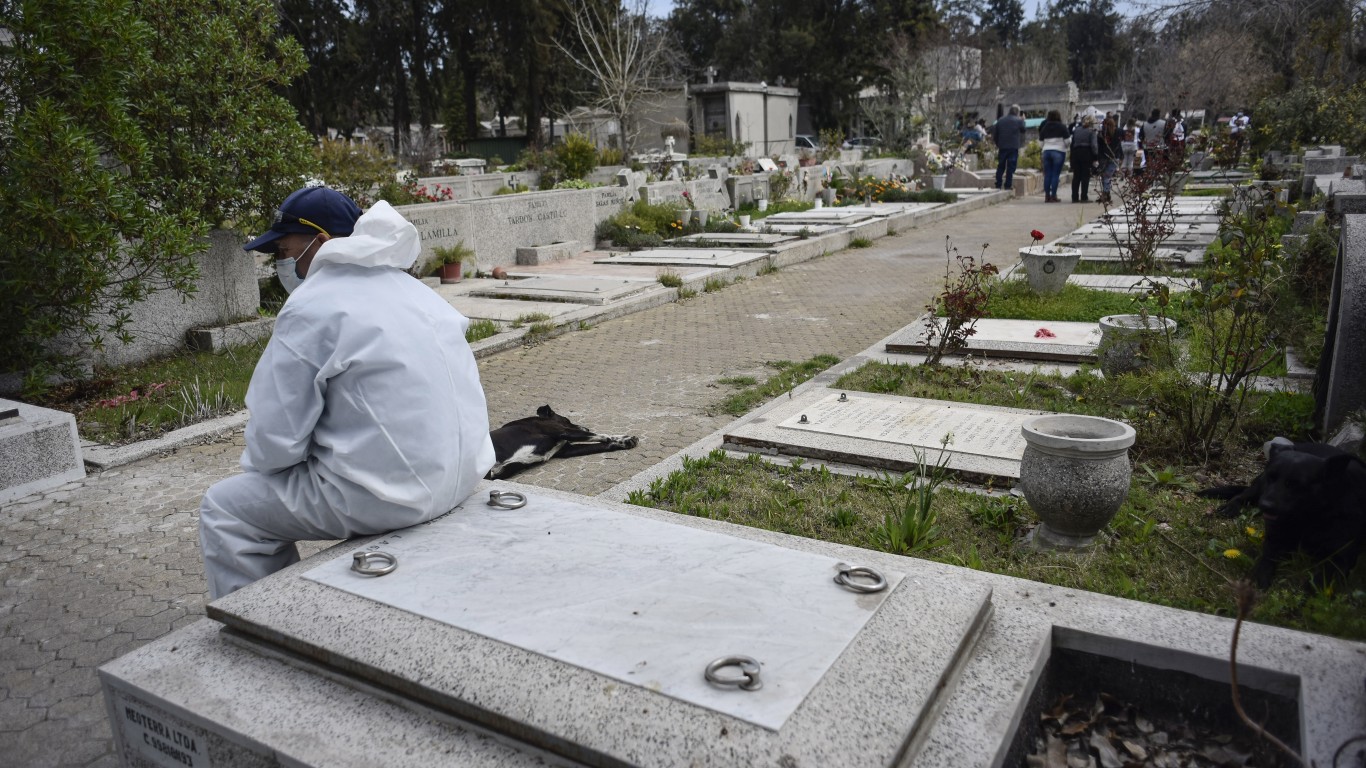
Sep 28: Global death toll hits 1 million
Coronavirus global death toll hits 1 million people less than 10 months after first case reported in Wuhan, China.
[in-text-ad]
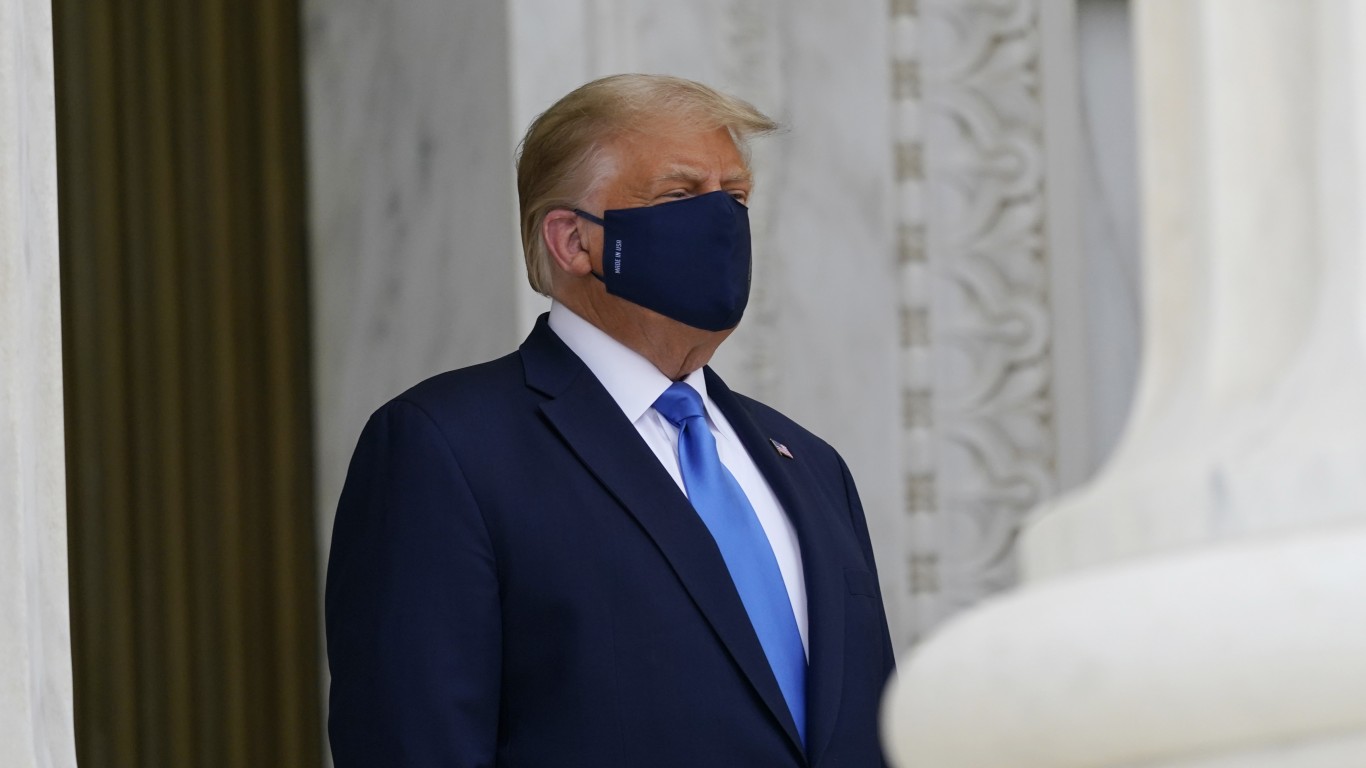
Oct 2: Trump and first lady test positive for the coronavirus
Trump tweets that he and first lady Melania Trump have tested positive for coronavirus and are now self-isolating. The president is 74, which puts him in a high-risk group.

Oct 19: Global cases surpass 40 million
More than 40 million coronavirus infections have now been reported worldwide. About 1.1 million people have died, including nearly 220,000 in the U.S.
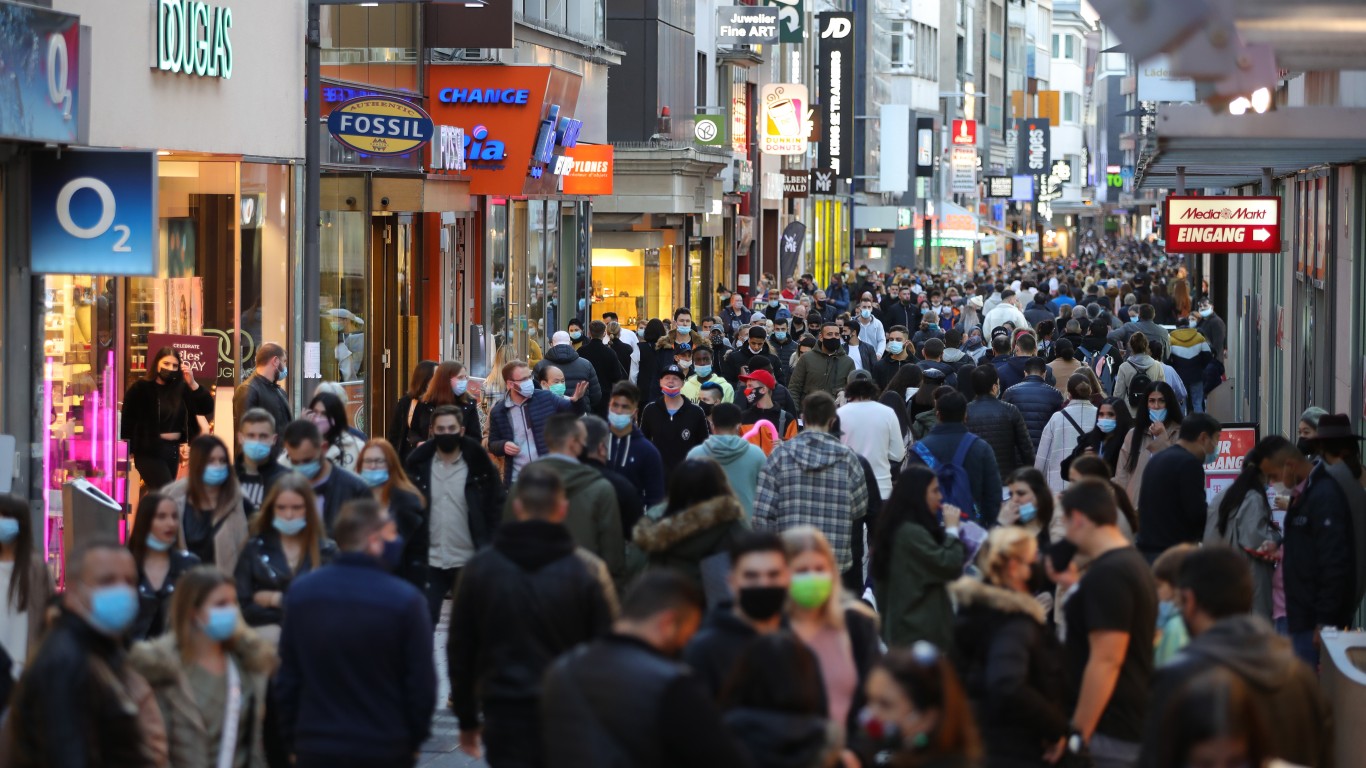
Oct 29: Europe is again the ‘epicenter’ of the pandemic
WHO European regional director announces that the continent has become once again the “epicenter” of the global coronavirus pandemic. As many as 1.5 million new COVID-19 confirmed infections were reported in Europe in one week.
[in-text-ad-2]
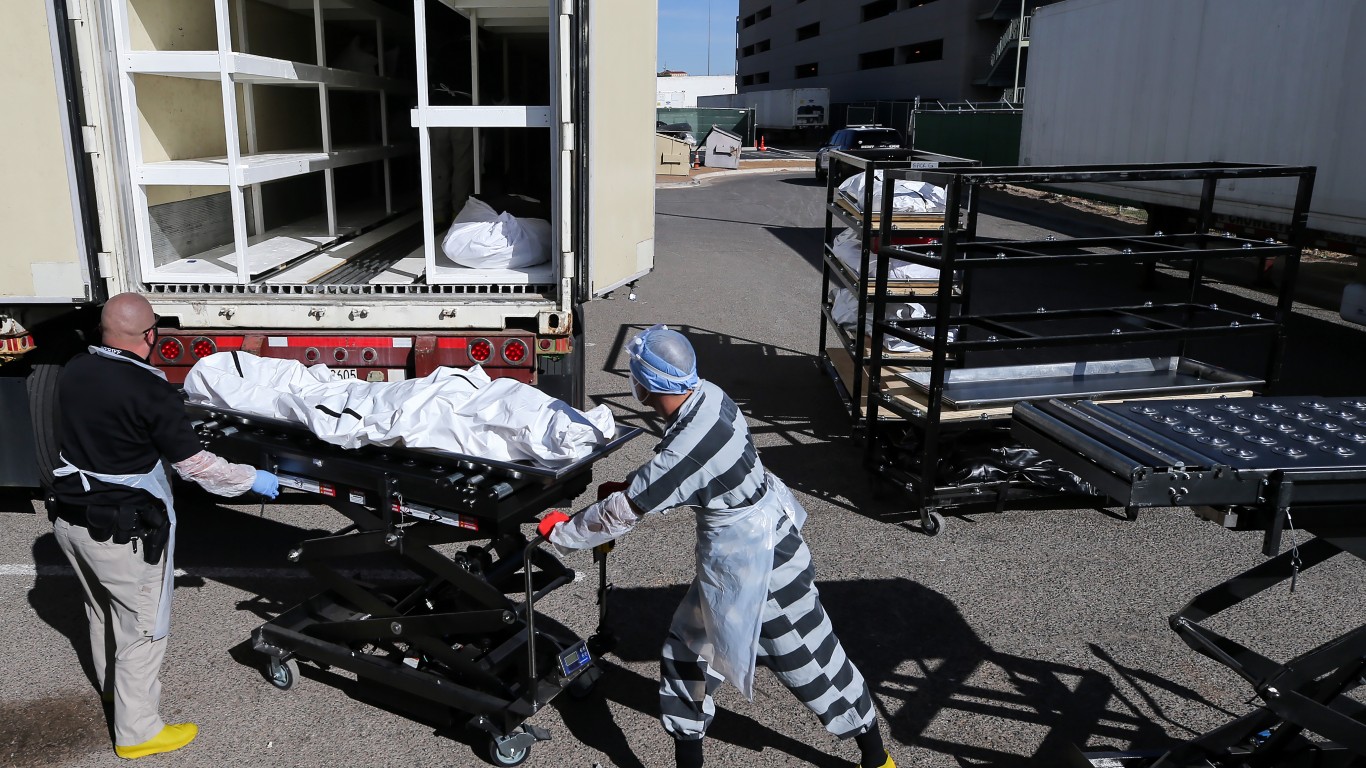
Nov 18: US death toll hits 250,000
COVID-19 has now killed more than a quarter of a million people in the U.S. That is about the entire population of Buffalo, New York.
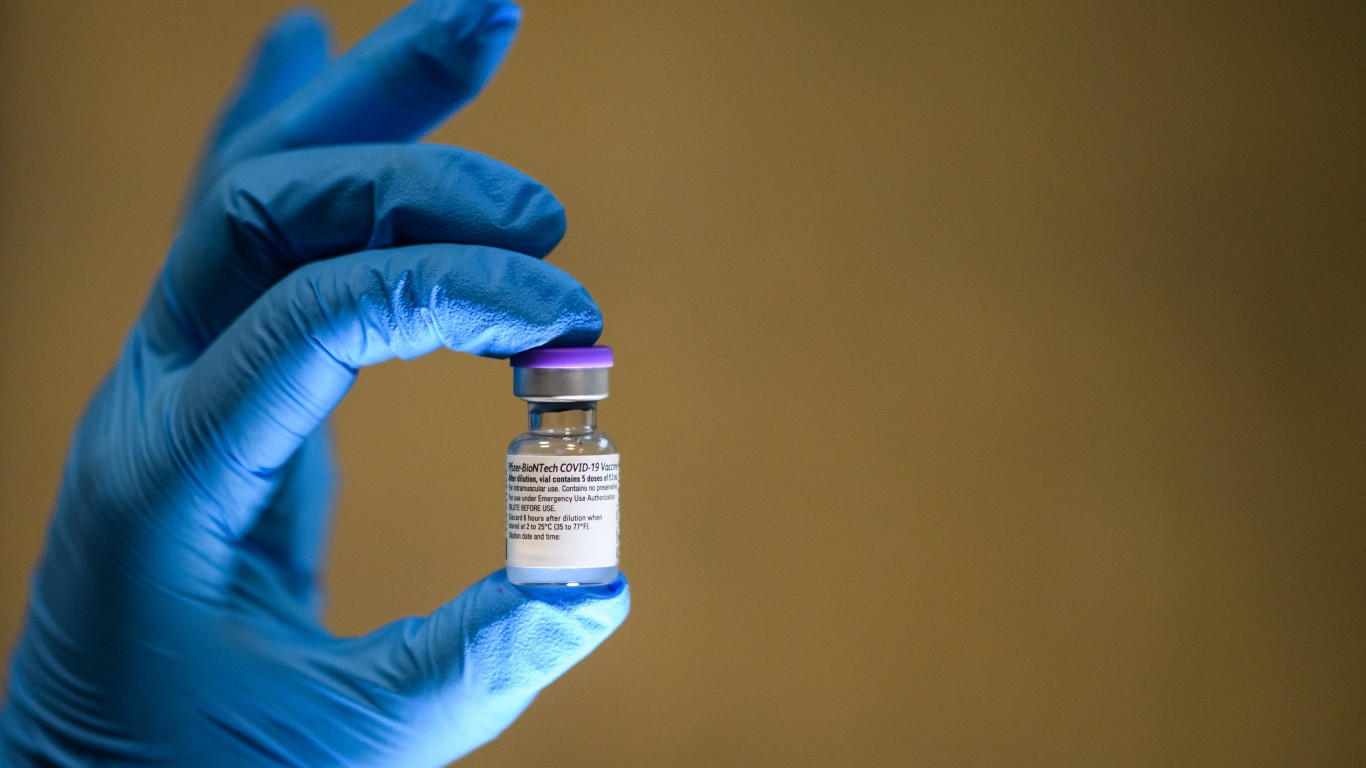
Dec 7: UK first to roll out the Pfizer-BioNTech vaccine
In the U.K., a 90-year-old woman becomes the first person in the world to be given the Pfizer-BioNTech COVID-19 vaccine as part of a mass vaccination program. People who are 80 and over and who are either in a hospital or are being discharged after a hospital stay are the first to receive the vaccine in the U.K.
[in-text-ad]
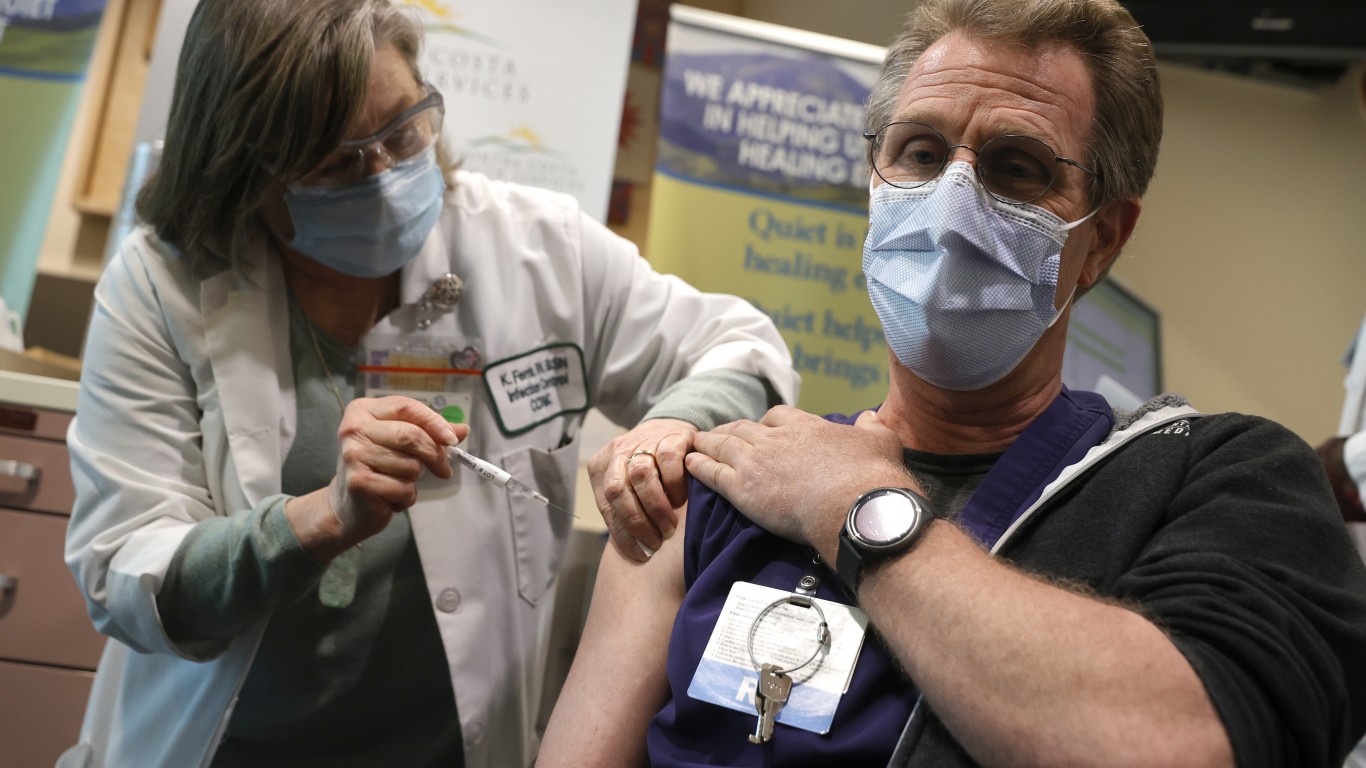
Dec 14: US begins vaccinating population with Pfizer vaccine
The Pfizer-BioNTech vaccine against COVID-19, the first federally approved coronavirus vaccine in the U.S., is administered to health care workers and staff at nursing homes nationwide.
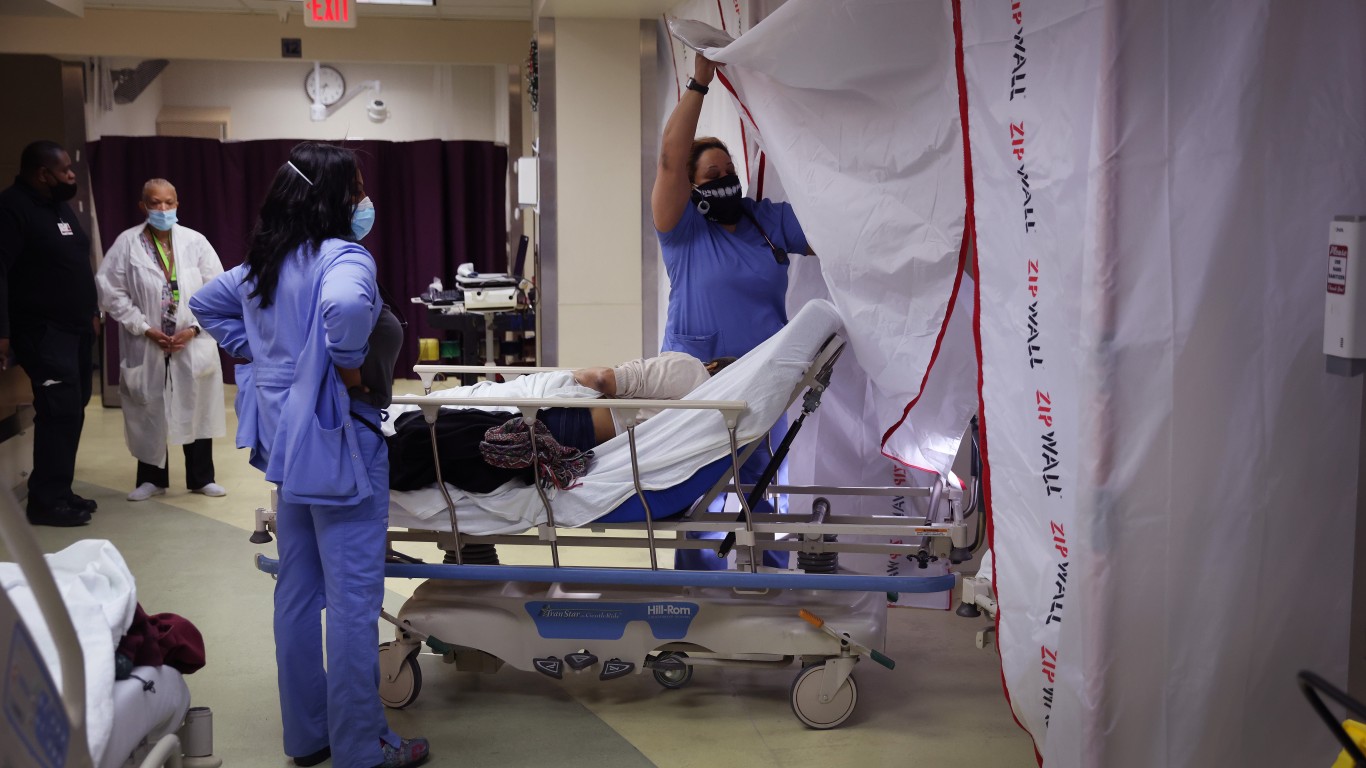
Dec 14: US death toll hits 300,000
The U.S. death toll from the coronavirus tops 300,000 — the day the country begins dispensing COVID-19 shots in a campaign to stop the pandemic.

Dec 15: FDA finds Moderna vaccine safe
The U.S. Food and Drug Administration confirms the effectiveness and safety of the Moderna COVID-19 vaccine, clearing a path to authorization. The potential second COVID-19 vaccine is found to be 95% effective. However, in people older than 65, the vaccine had only an 86.4% rate of immunization success.
The Average American Is Losing Momentum On Their Savings Every Day (Sponsor)
If you’re like many Americans and keep your money ‘safe’ in a checking or savings account, think again. The average yield on a savings account is a paltry .4%1 today. Checking accounts are even worse.
But there is good news. To win qualified customers, some accounts are paying more than 7x the national average. That’s an incredible way to keep your money safe and earn more at the same time. Our top pick for high yield savings accounts includes other benefits as well. You can earn up to 4.00% with a Checking & Savings Account today Sign up and get up to $300 with direct deposit. No account fees. FDIC Insured.
Click here to see how much more you could be earning on your savings today. It takes just a few minutes to open an account to make your money work for you.
Thank you for reading! Have some feedback for us?
Contact the 24/7 Wall St. editorial team.